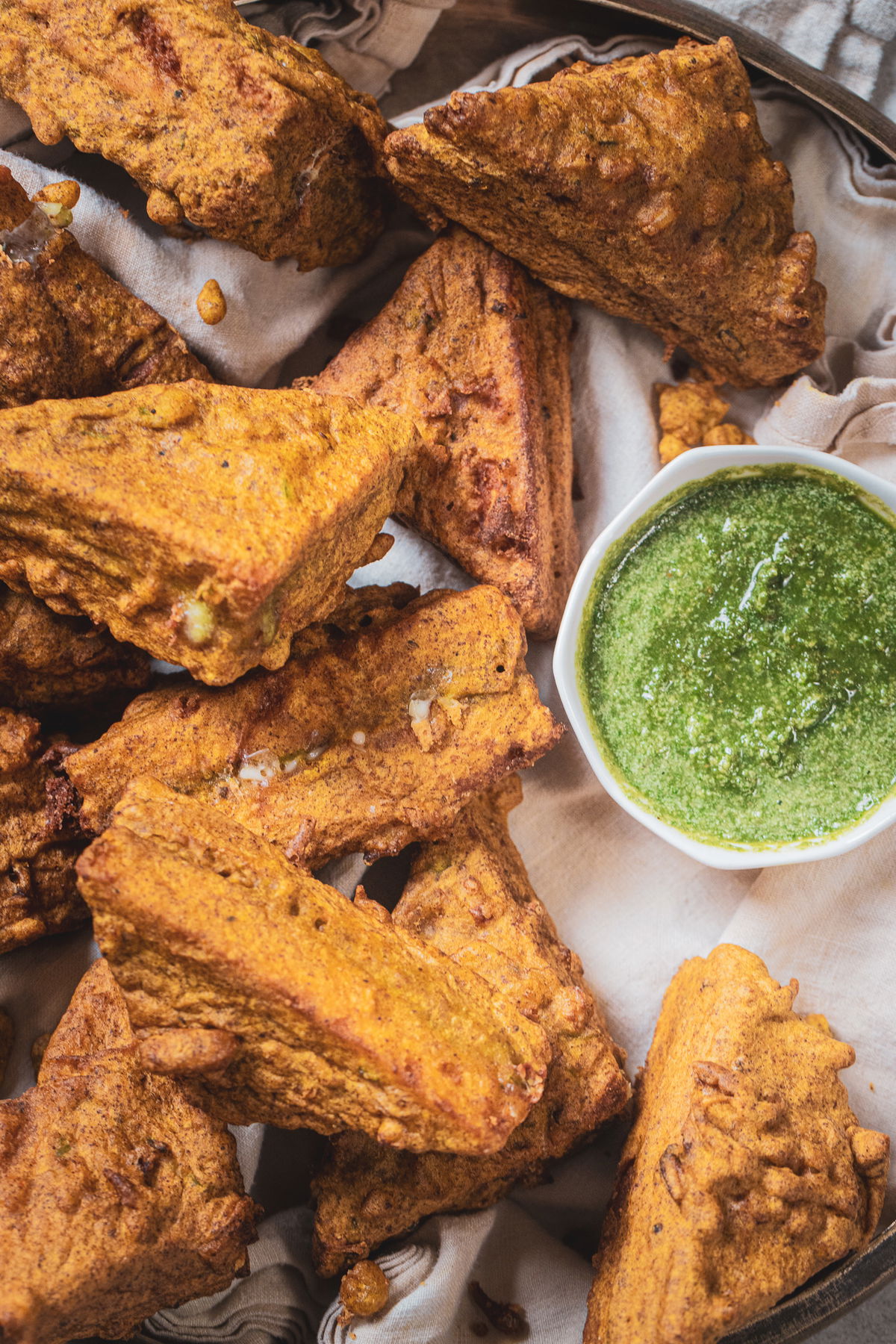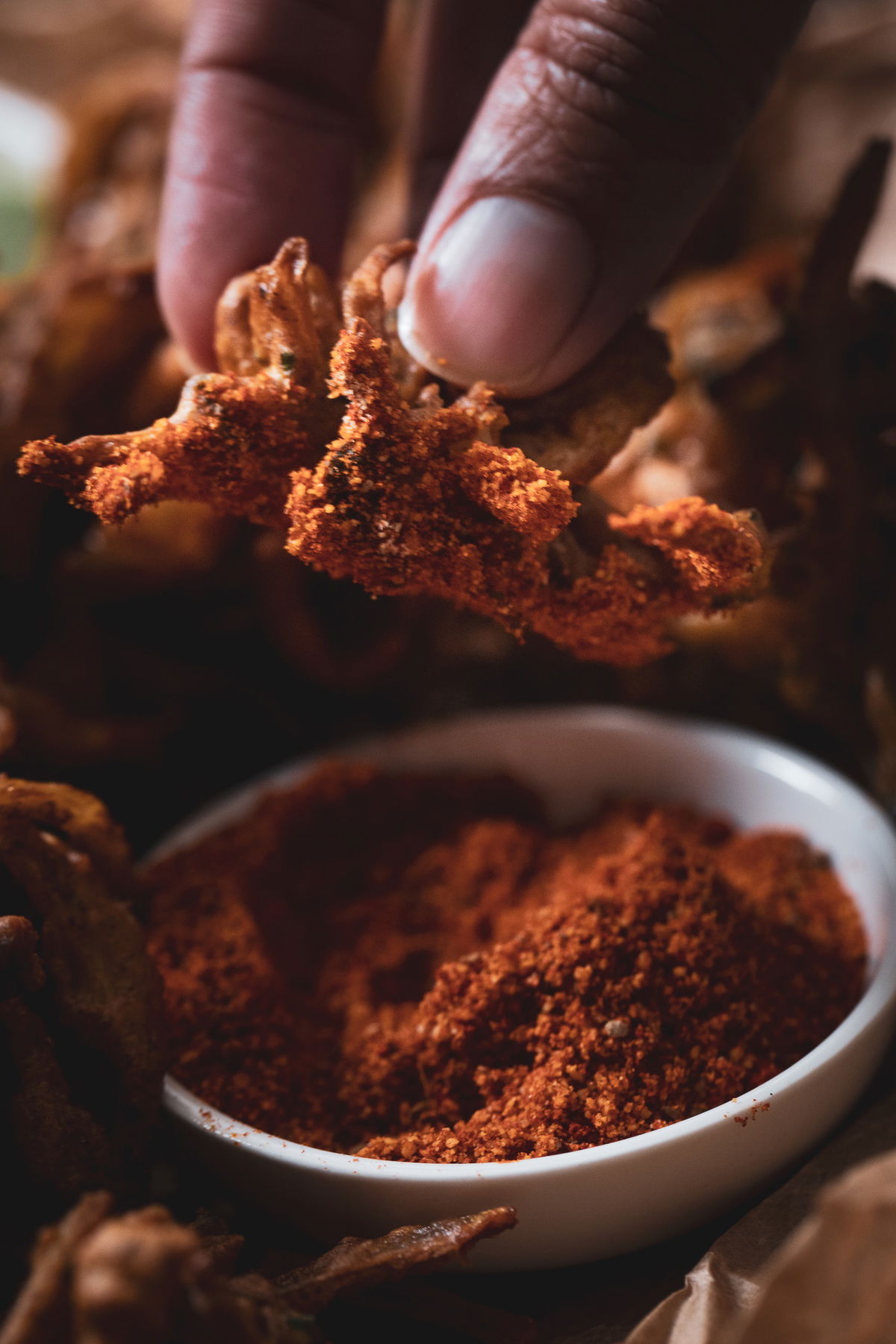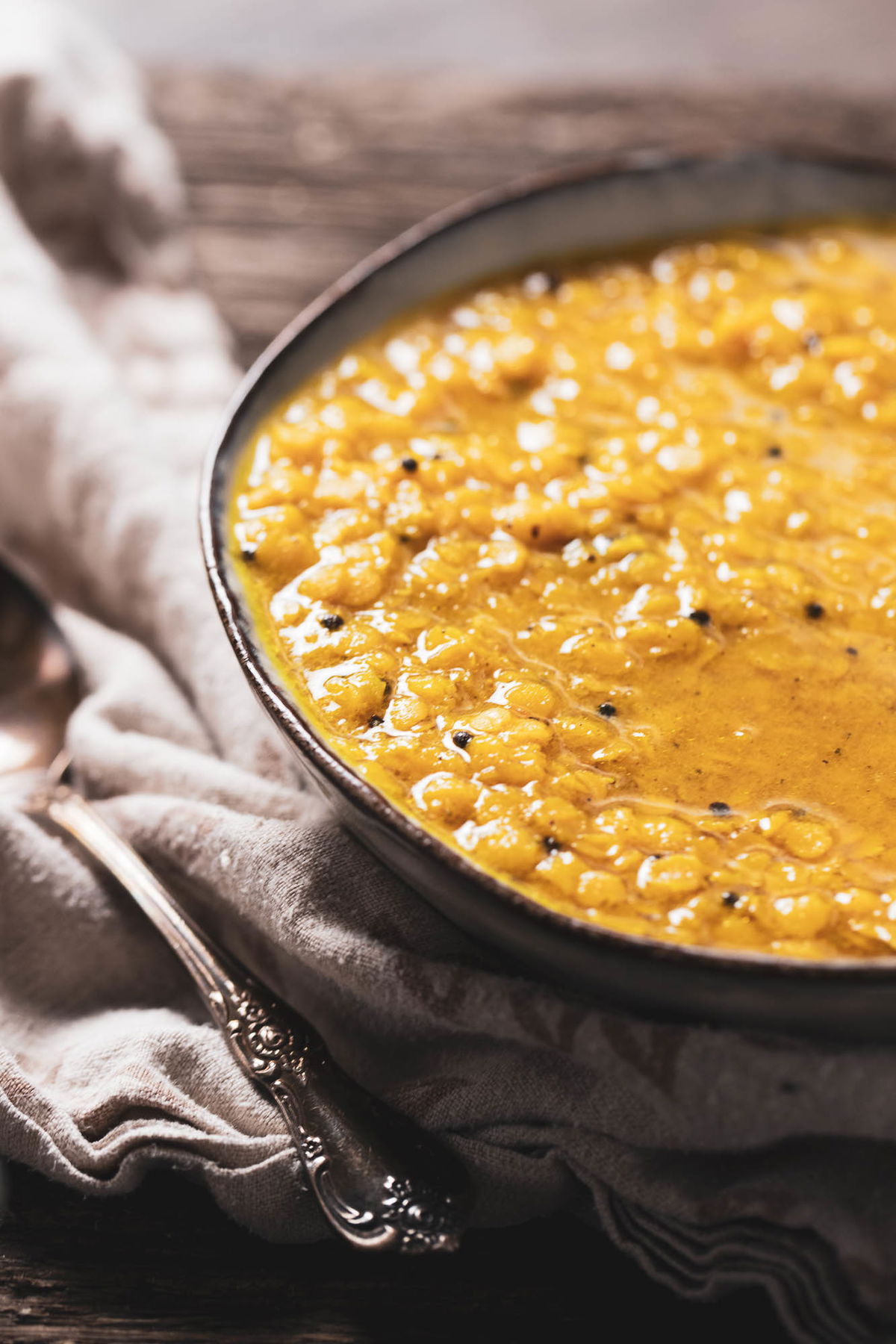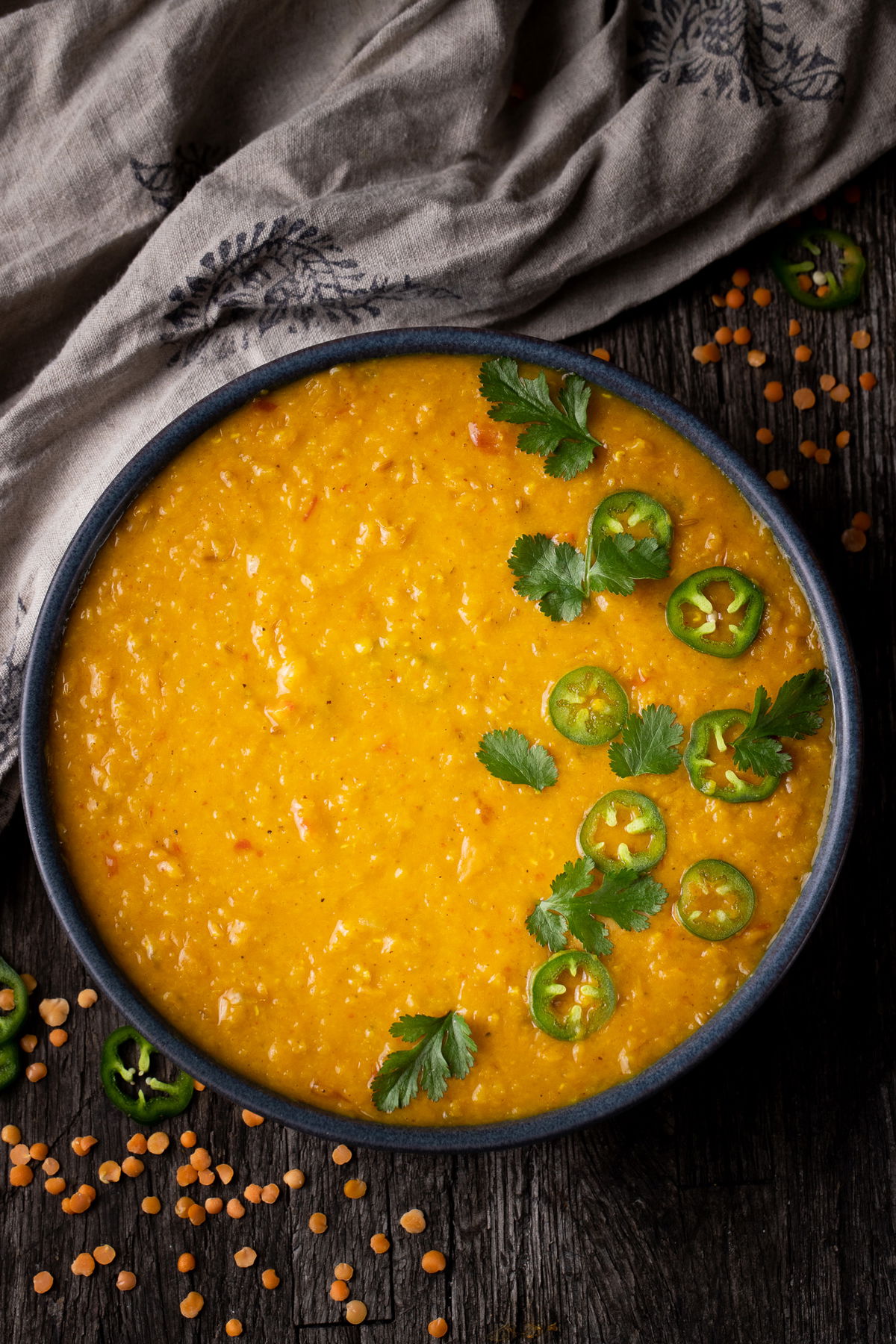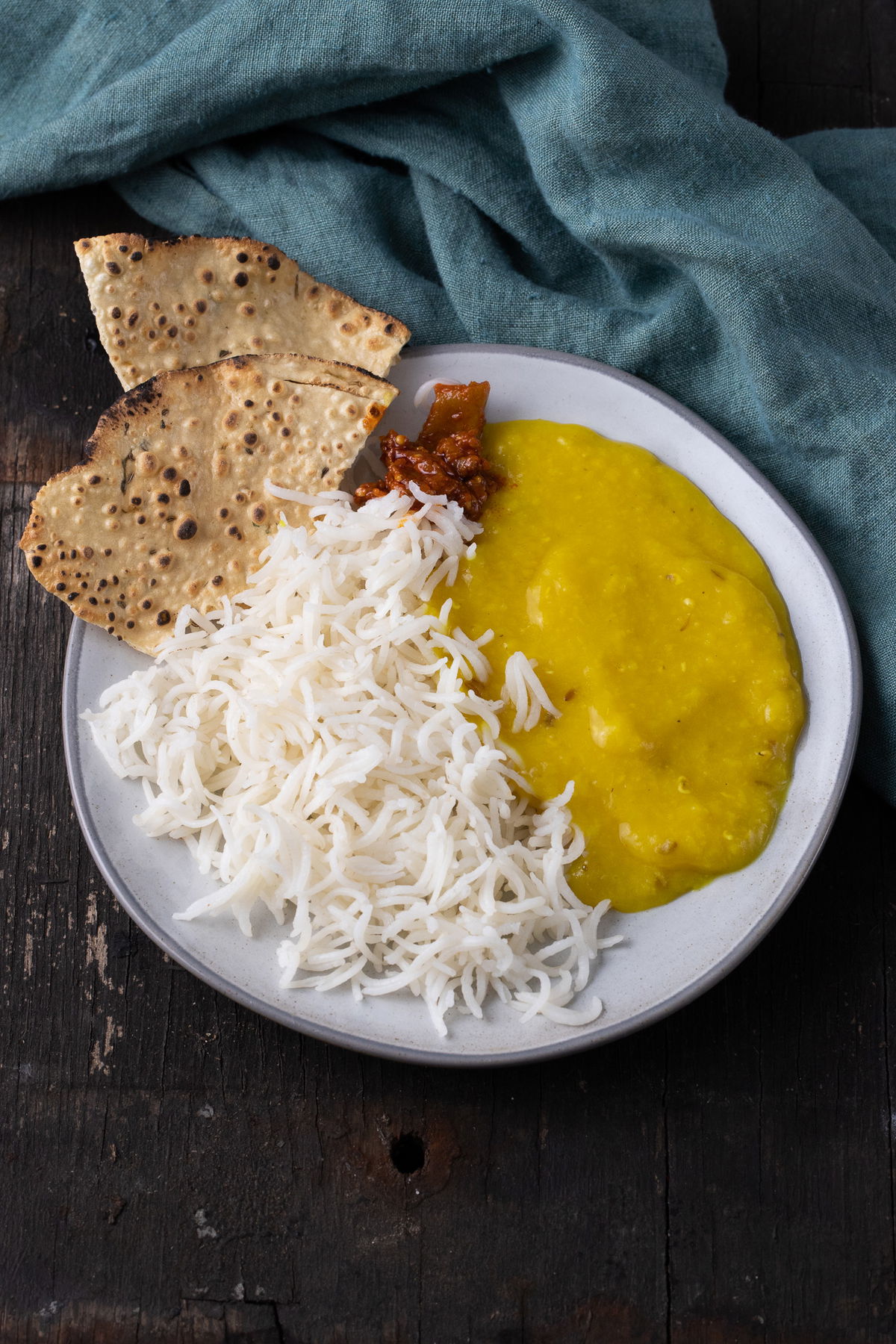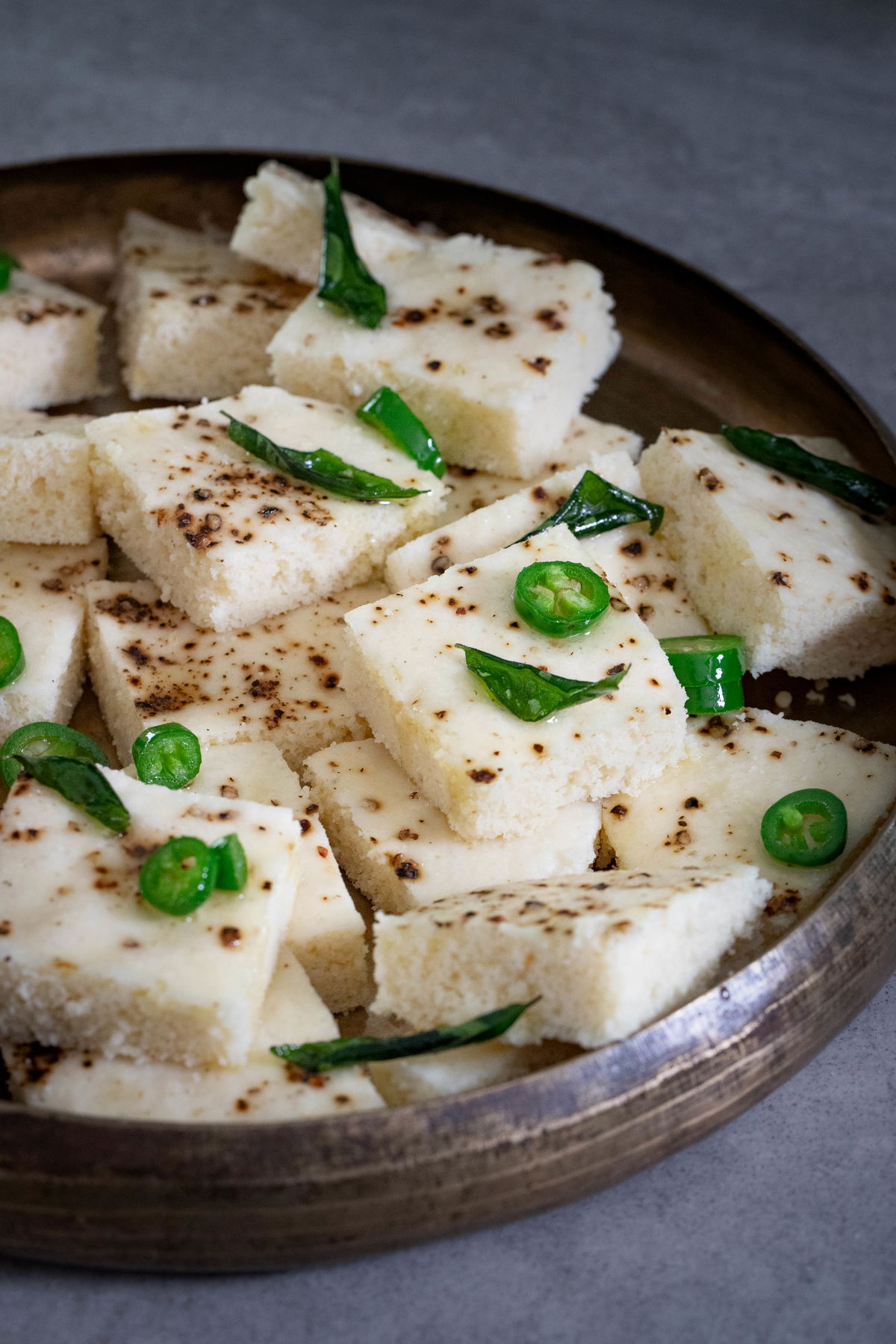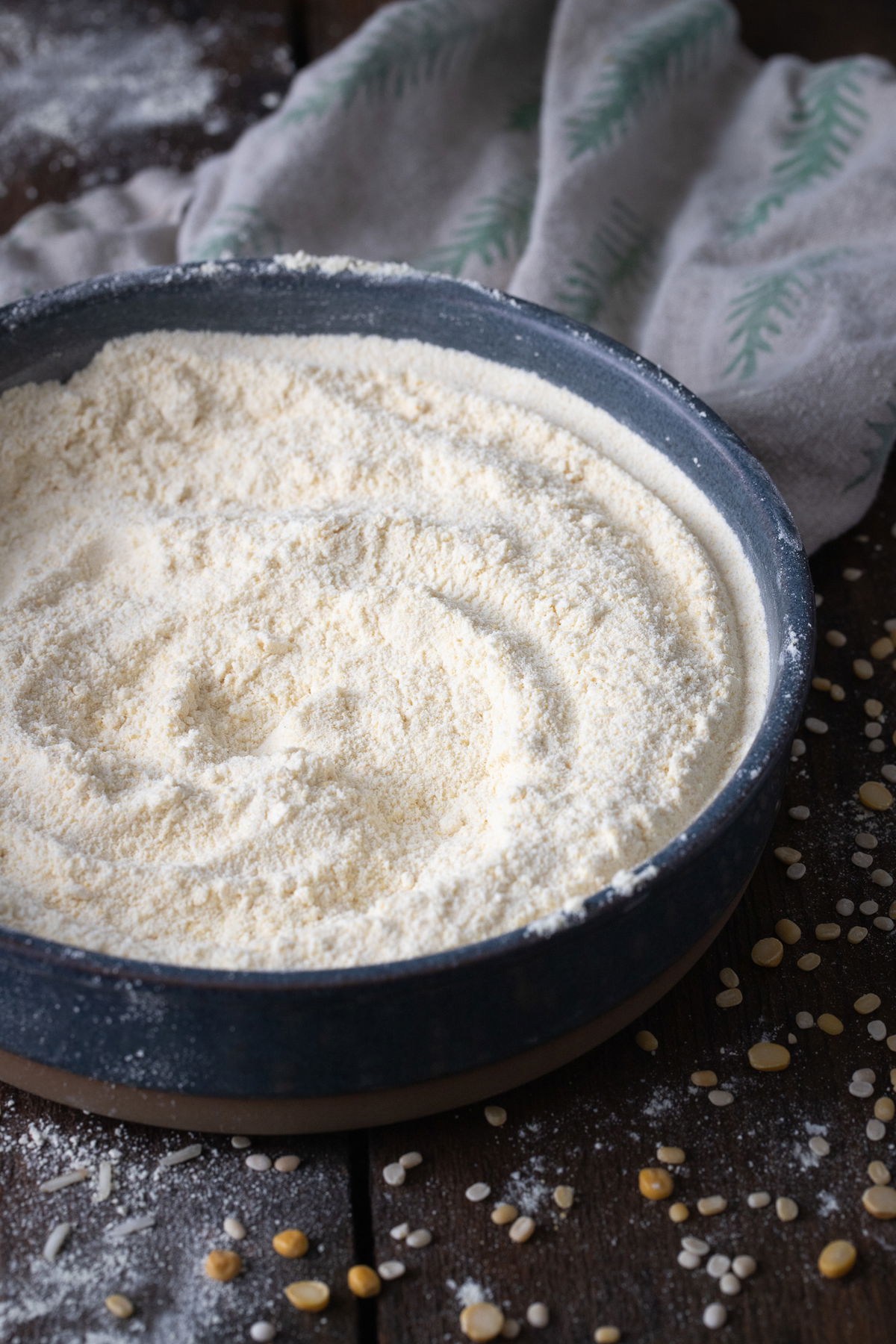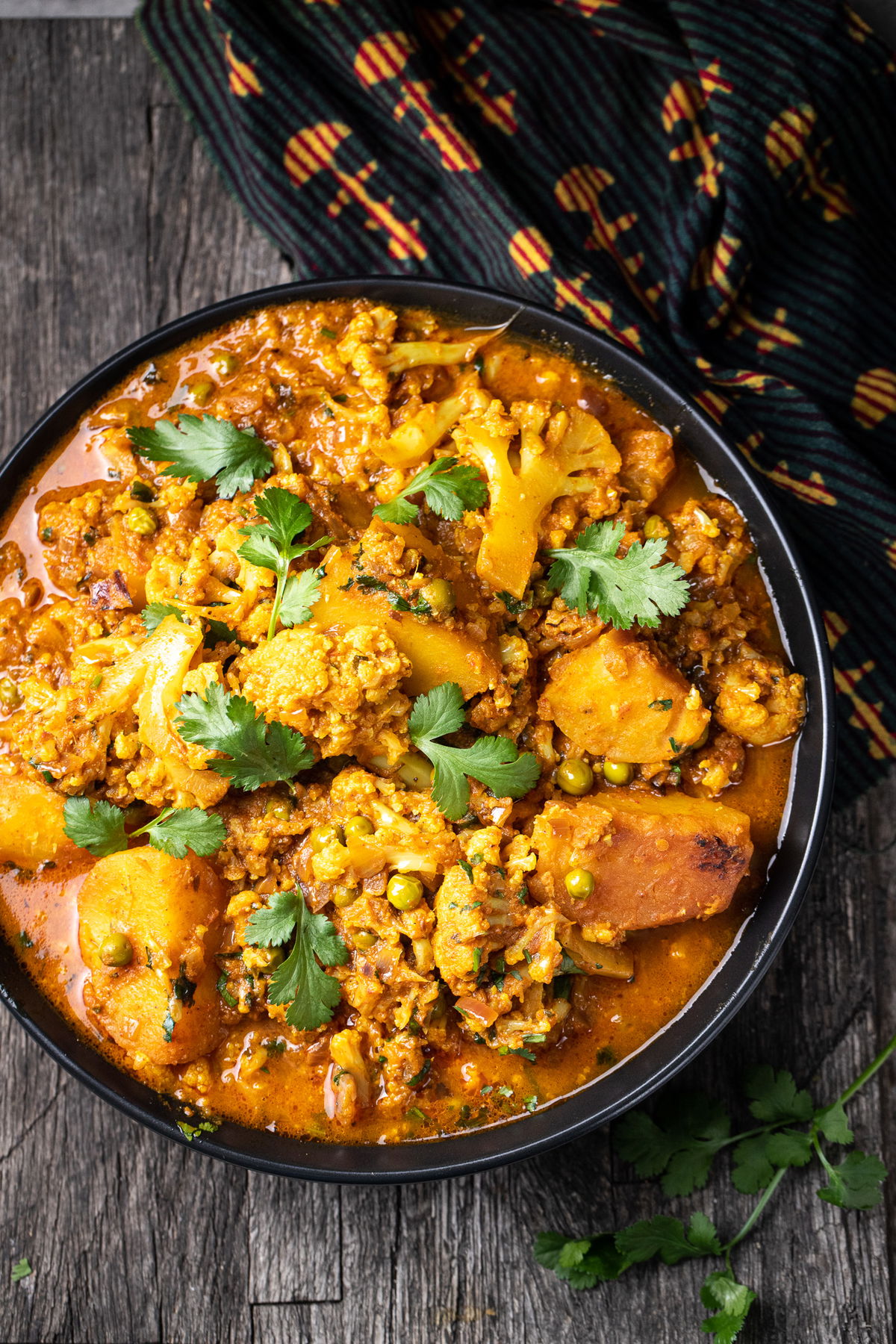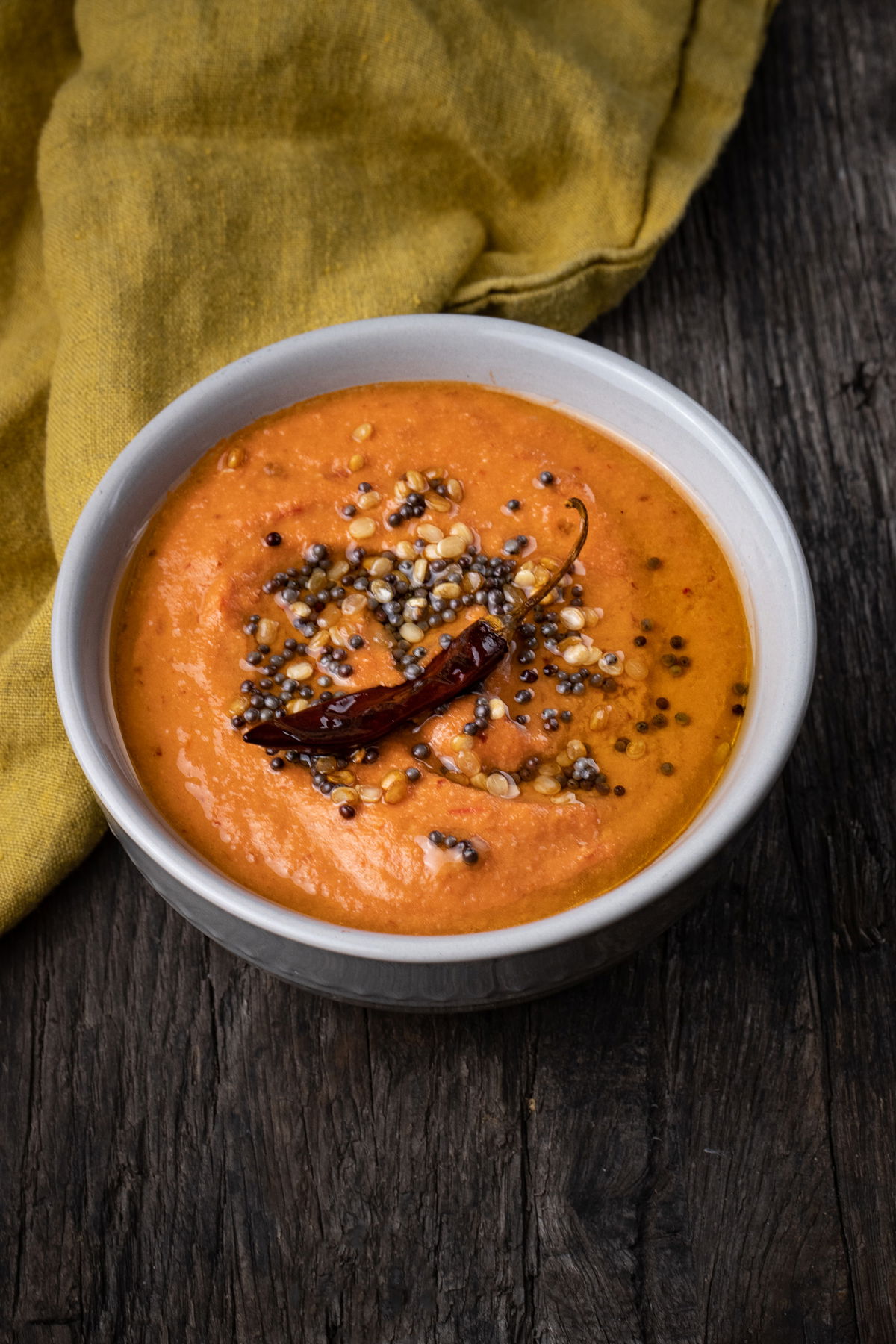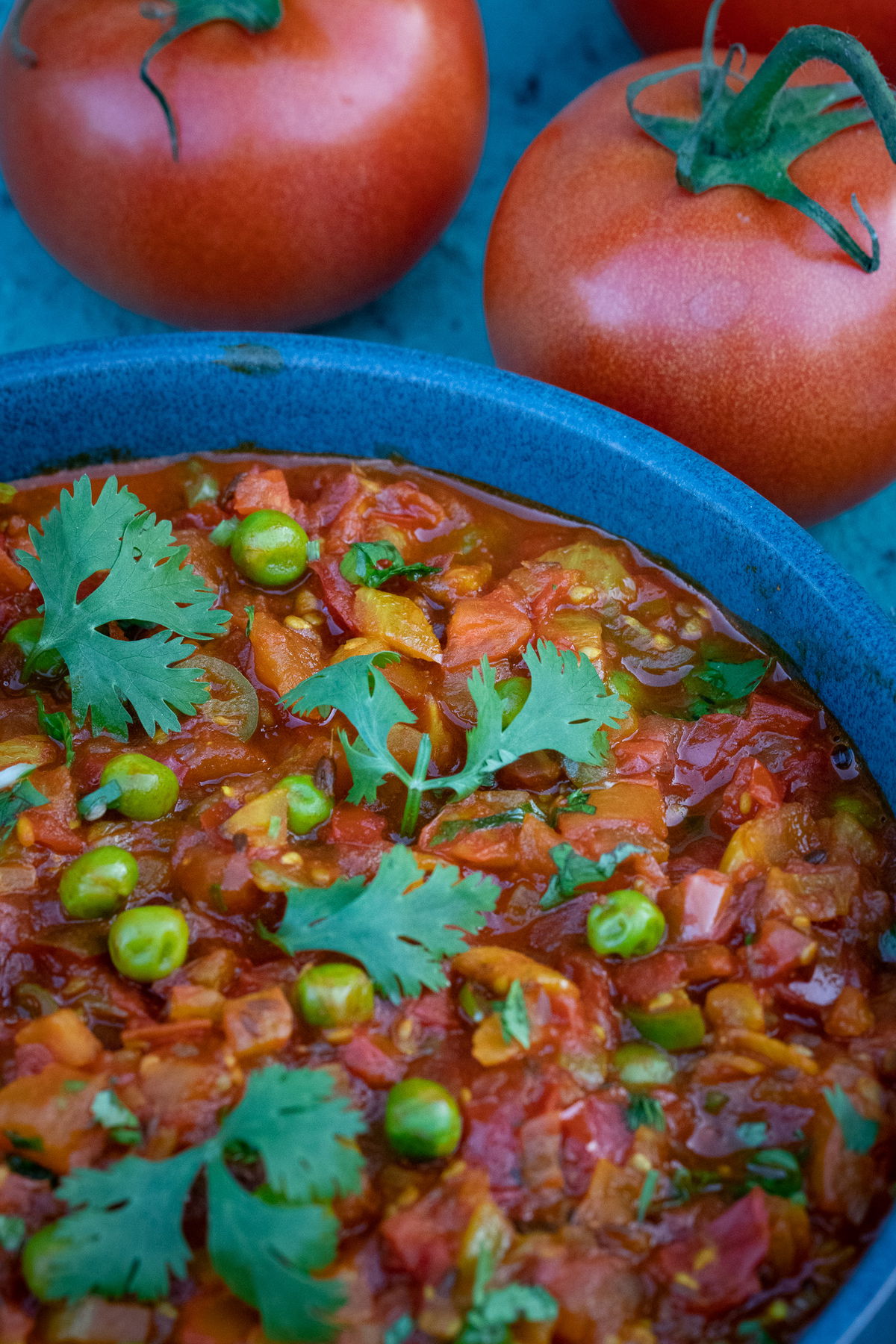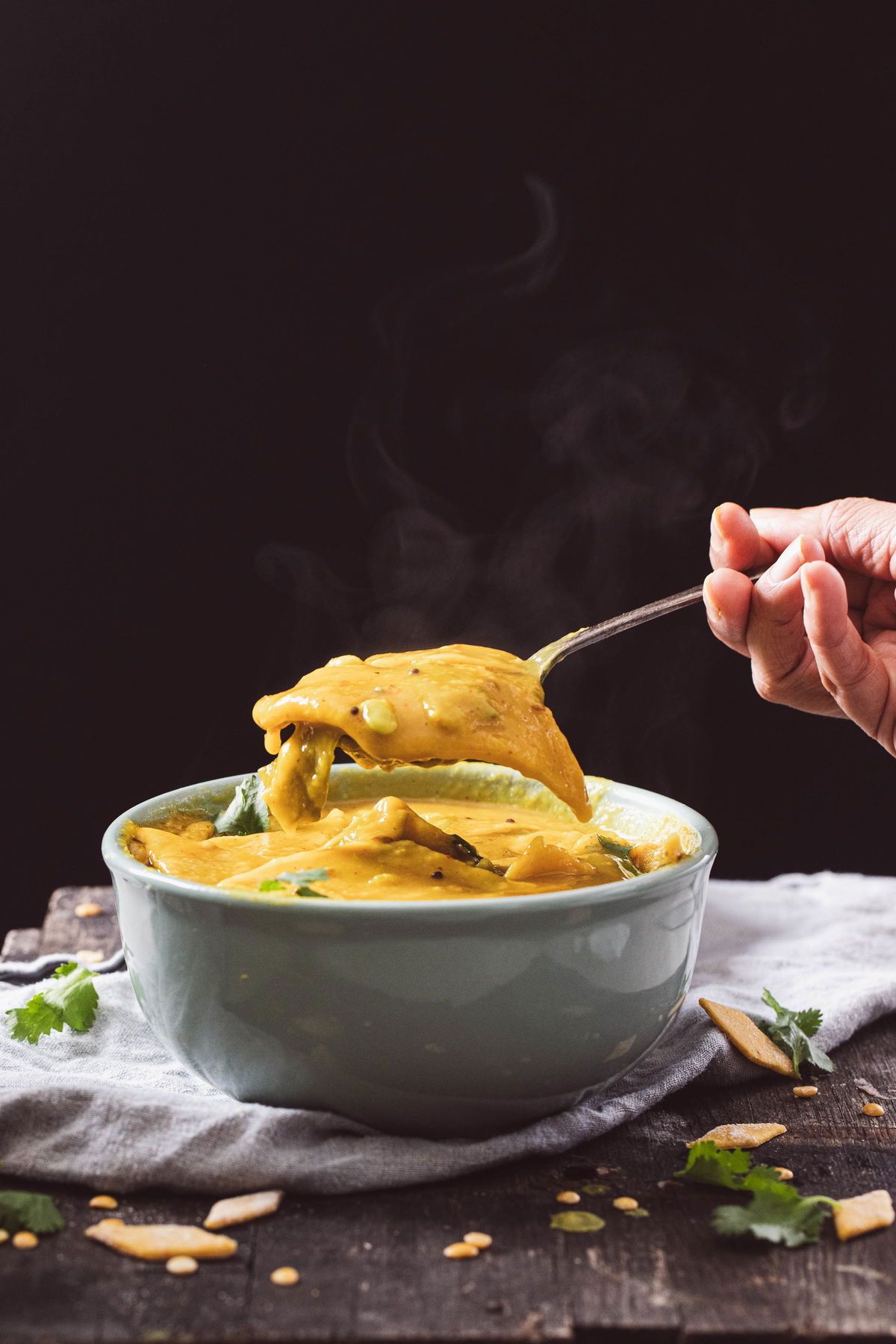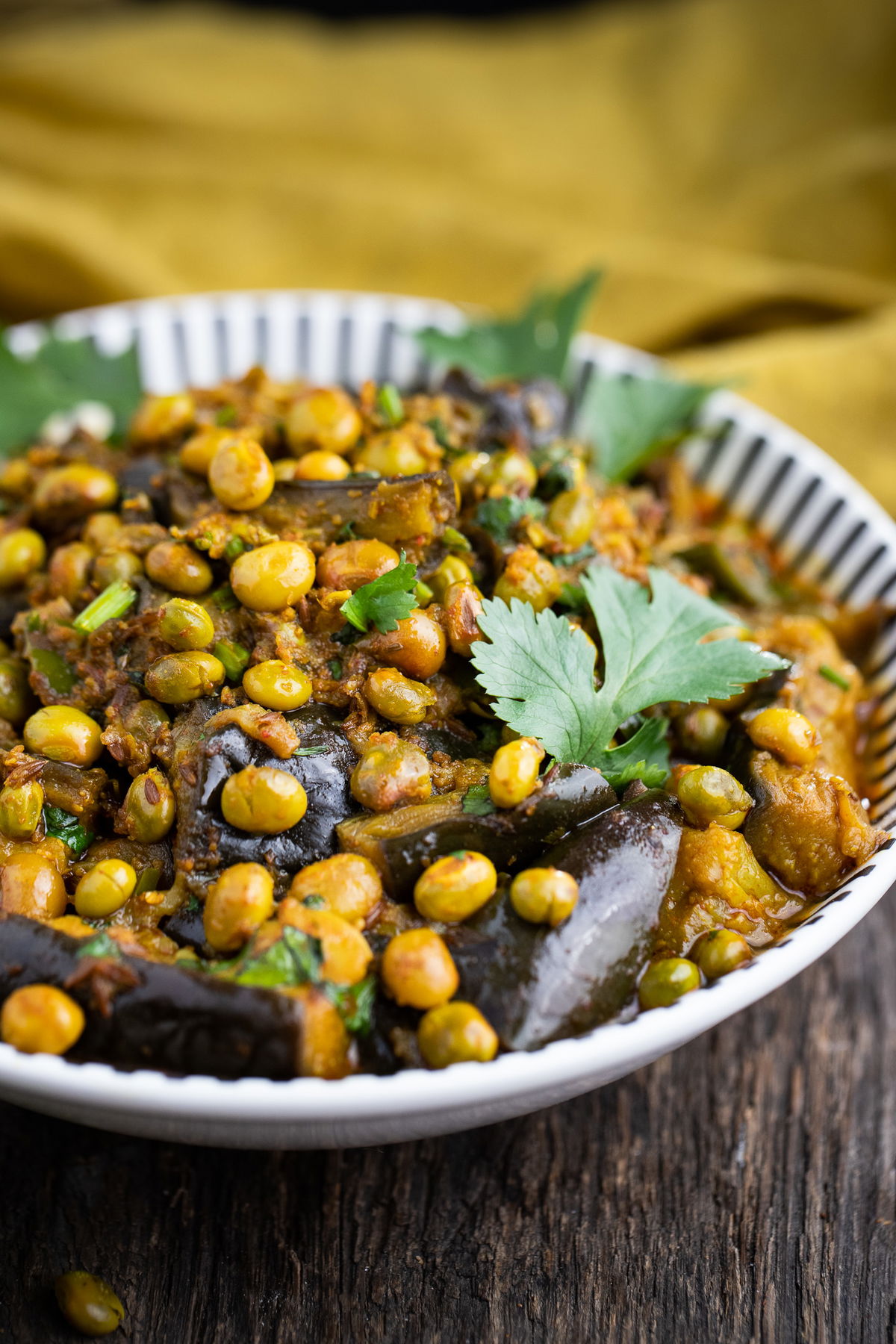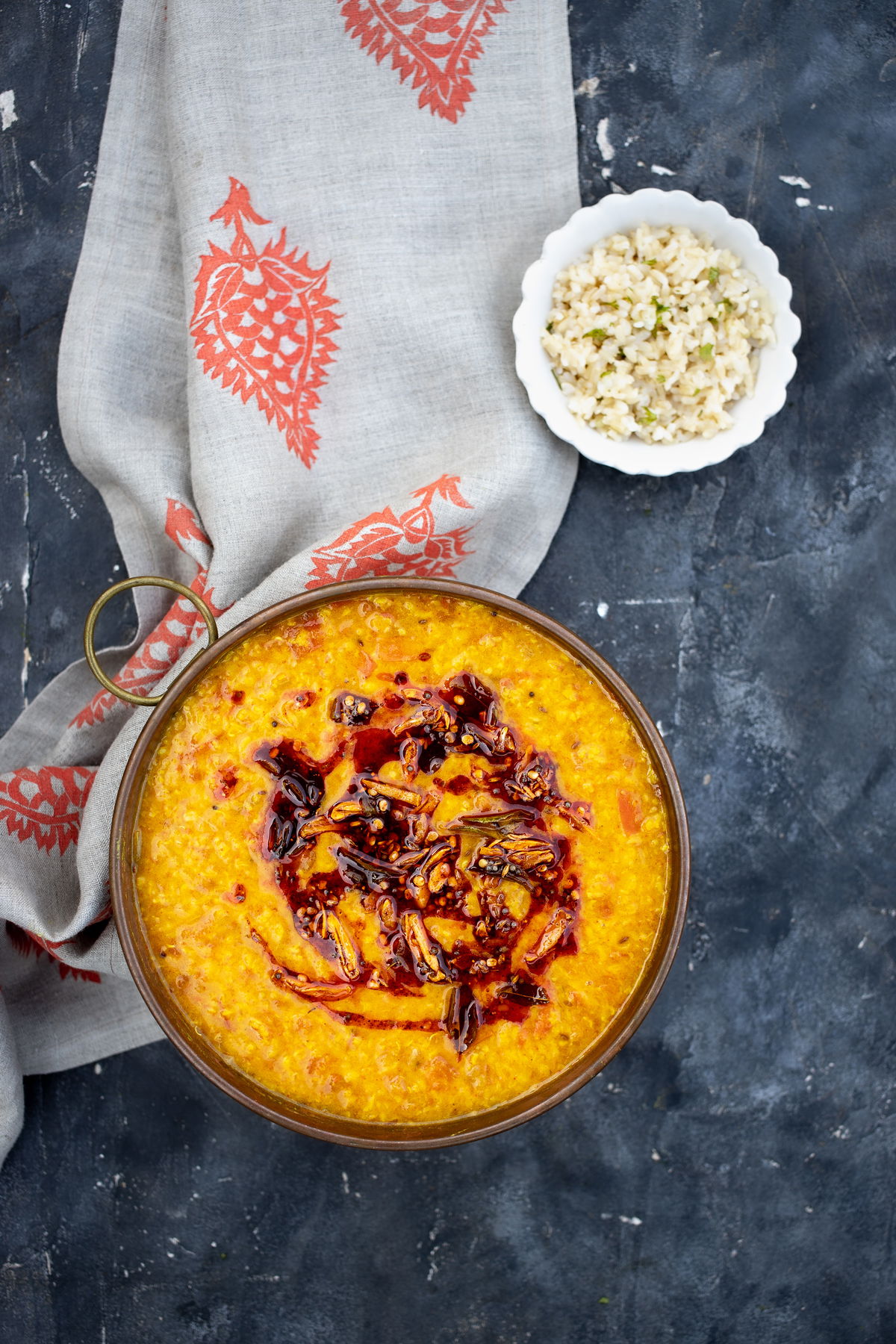So many different Indian foods are made with lentils. From khichdi, made of simple rice and lentils, to dals, flatbreads, and some Maggie noodles are made from lentils. Beans and lentils are a primary source of protein for many vegetarians, and India is full of vegetarians.
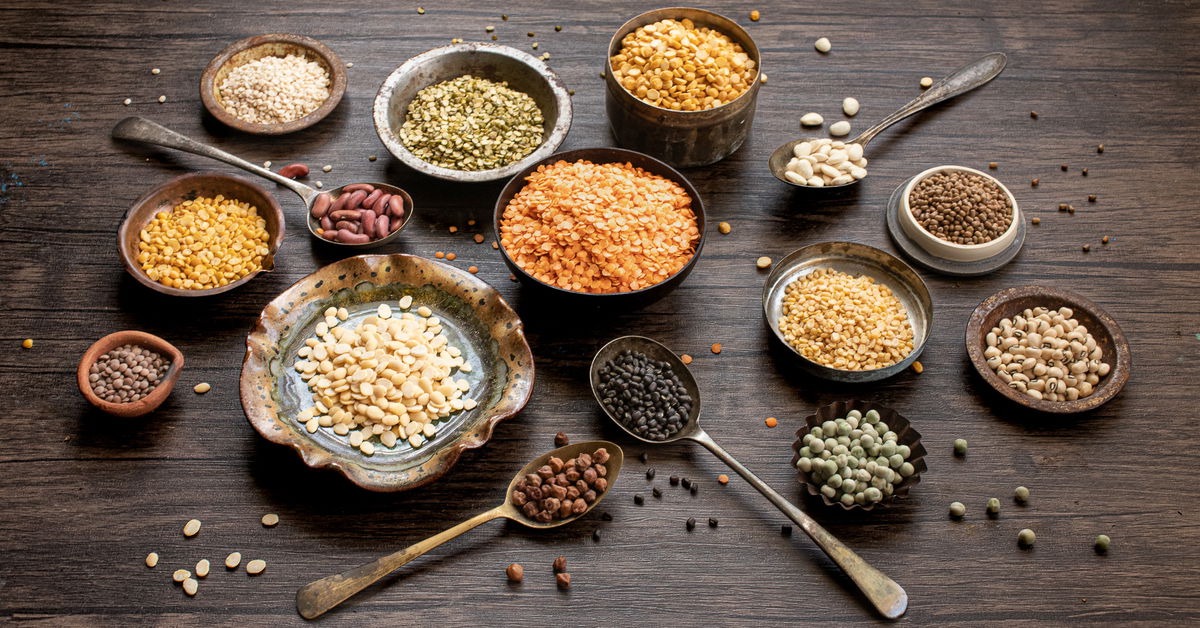
What is Dal?
Dal is the word for “split pulse” commonly used across India. Dal can refer to dishes featuring split pulses or to the dried, split pulse itself. The typical Indian meal often has multiple lentil preparations, often including dal in addition to whole beans. You will often find dals included even in the dessert.
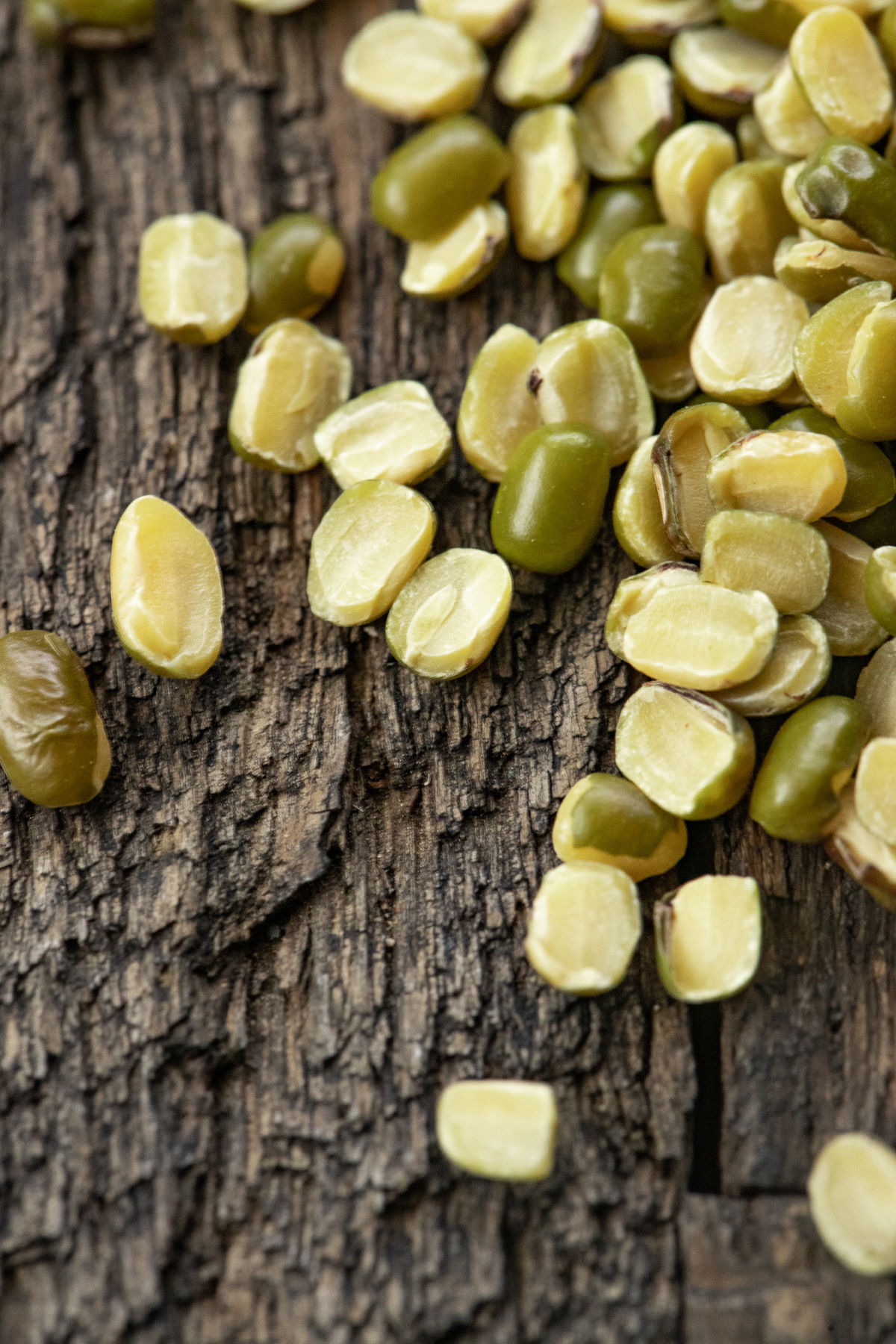
Pulses can often be purchased in four variations, whole, whole with the hull removed, “split” with the hull still attached, or split without the hull. Splitting peas and beans is a convenient way to reduce preparation and cooking time.
| Dal | Lentil or Bean |
|---|---|
| Masoor (Red Lentil) | Lentil |
| Tuvar (Pigeon Pea) | Lentil |
| Moong, Mung | Bean |
| Chana, Chickpea | Bean |
| Urad | Bean |
| Val (Lima Bean) | Bean |
Beans of India
| English Names | Hindi Names | Gujarati Names | Botanical Name | Origin | Other Names | Featured Recipes |
|---|---|---|---|---|---|---|
| Cowpea | Lobia | Chora (dried), Chori (fresh) | Vigna unguiculata | West Africa | Chori, Chawli | Chora nu shaak |
| Hyacinth Bean | Papdi | Papdi, Surti Papdi, Val Papdi | Africa | hyacinth bean,[3] lablab-bean[4] bonavist bean/pea, dolichos bean, seim or sem bean, lablab bean, Egyptian kidney bean, Indian bean, bataw and Australian pea | Papdi nu Shaak Recipe | |
| Green Gram Beans | Moong, Mung | Mug | Vigna radiata | India | Green Bean, Moong, Mash Bean, Munggo, Monggo, Green Gram, Golden Gram | Homestyle Moong Dal in the Instant Pot |
| Black Eyed Peas | Chawli, Lobia | Chora (dried), Chori (fresh) | Vigna unguiculata subsp. unguiculata | West Africa | Chora nu Shaak (Gujarati Style Black-Eyed Peas) | |
| Adzuki | Chawli, Chori | Chora (dried), Chori (fresh) | Vigna angularis | West Africa | Chora nu Shaak (Gujarati Style Black-Eyed Peas) | |
| Moth | Matki | Math | Vigna aconitifolia | India | Dew Beans, Dew Gram, Moth, Mat, Mat Beans, Matki | |
| Red Kidney Beans | Rajma | – | Phaseolus vulgaris | New World (Mesoamerica) | ||
| Soy, soya | Soya | Soya | Glycine max | East Asia | Edamame, Bhat, Bhatwar, Bhetmas, Ramkurthi | |
| Fava, Broad Beans | Baakala | – | Vicia faba | Old World, found in Ancient Israeli sites | Semphalli, Ballor, Bakla | Eromba |
| Lima | Val | Val | Phaseolus lunatus | New World | Bean butter bean, Sieva bean, Double bean, Madagascar bean | Vaal nu Shaak | Lima Beans Curry |
| Runner | sem fhali | – | Phaseolus coccineus | New World | Flat bean, helda bean, romano bean. Butter bean (but don’t confuse with Lima Beans) | |
| Common | – | – | Phaseolus vulgaris | New World. Mesoamerica first, travelled south | Green beans, french beans, string beans | |
| Cluster Bean, Guar | Gawar | Gawar singh | Cyamopsis tetragonoloba | Origins unknown, but probably Africa. Most are grown in India. | gavar, gawar, or guvar bean | |
| Ground / Bambara Beans | Chawli, Lobia | – | Vigna subterranean | West Africa | Congo Goober, Earth Pea, Ground-Bean, Lobiya, Chawli, Chavli, Bambara Groundnut | |
| Yardlong Bean | Chori (fresh) | Chori | Vigna unguiculata subsp. sesquipedalis | West Africa | yardlong bean, pea bean, long-podded cowpea, Chinese long bean, snake bean, bodi, and bora | |
| Velvet Bean | Kiwach, Kaunch ke beej, Baikhujani | Kivanch,Kavatch , Kandchan | Mucuna pruriens | India / Africa / Tropical Asia | Kiwach, Bengal Velvet Bean, Cowage, Cowitch, Lacuna Bean, Monkey tamarind, Bengal velvet bean, Florida velvet bean, Mauritius velvet bean | |
| Black gram | Urad | Adad | Vigna mungo | India | Adad, black lentil, | Dal Makhani (Buttery Black Lentil Curry) |
| Black Chickpea | Desi chana, kala chana | Desi chana, kala chana | Cicer arietinum | Southeast Turkey, cultivated in Middle East | Bengal Gram, Chana, Sanaga Pappu, Shimbra, Chana, Chole | Kala Chana (Black Chickpea) |
| White chickpea | kabuli chana | kabuli chana | Cicer arietinum | Southeast Turkey, cultivate maybe from Afghanistan (named “Kabuli”) | Chana, chole, chickpea, garbanzo bean | Chana Masala (Chole) |
Lentil vs Bean vs Pulse
What is a Pulse?
A pulse is an edible seed from the legume family. It might be a bean, a lentil, or a pea. Plants in the legume family are special because they are nitrogen-fixing, meaning these plants can draw nitrogen out of the air and use it as food.
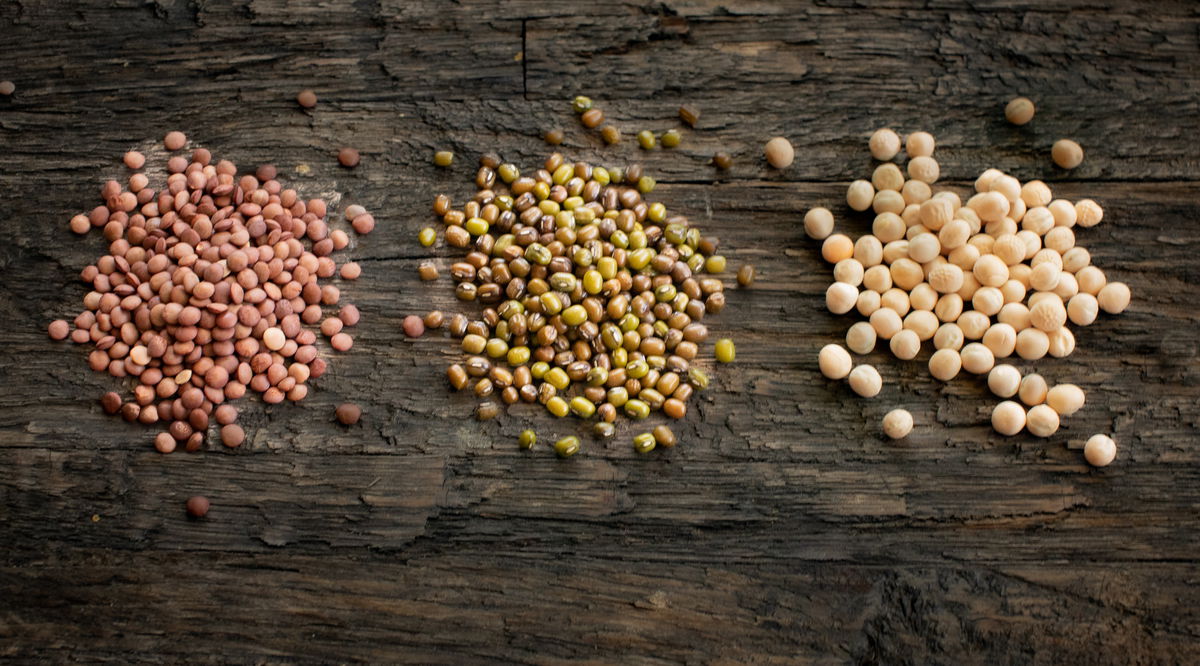
There are thousands of plants in the legume family that can do this, and only a handful of plants that are not legumes that can also do it. They all do it by hosting a soil bacteria called rhizobia that actually does the work.
This is super valuable for two reasons:
- Nitrogen is the main ingredient in fertilizer. Legumes are used by farmers as part of a crop rotation to naturally fertilize the soil for other crops
- Nitrogen is the defining element of protein. That is why lentils and beans are important sources of protein for vegetarians
What is a Lentil?
A lentil is a lens-shaped pulse. In fact, the name lentil means “lens.” Lentils are small and flat. That means they cook quickly and easily compared to beans. For the same reason, lentils do not have to be soaked before they are cooked.
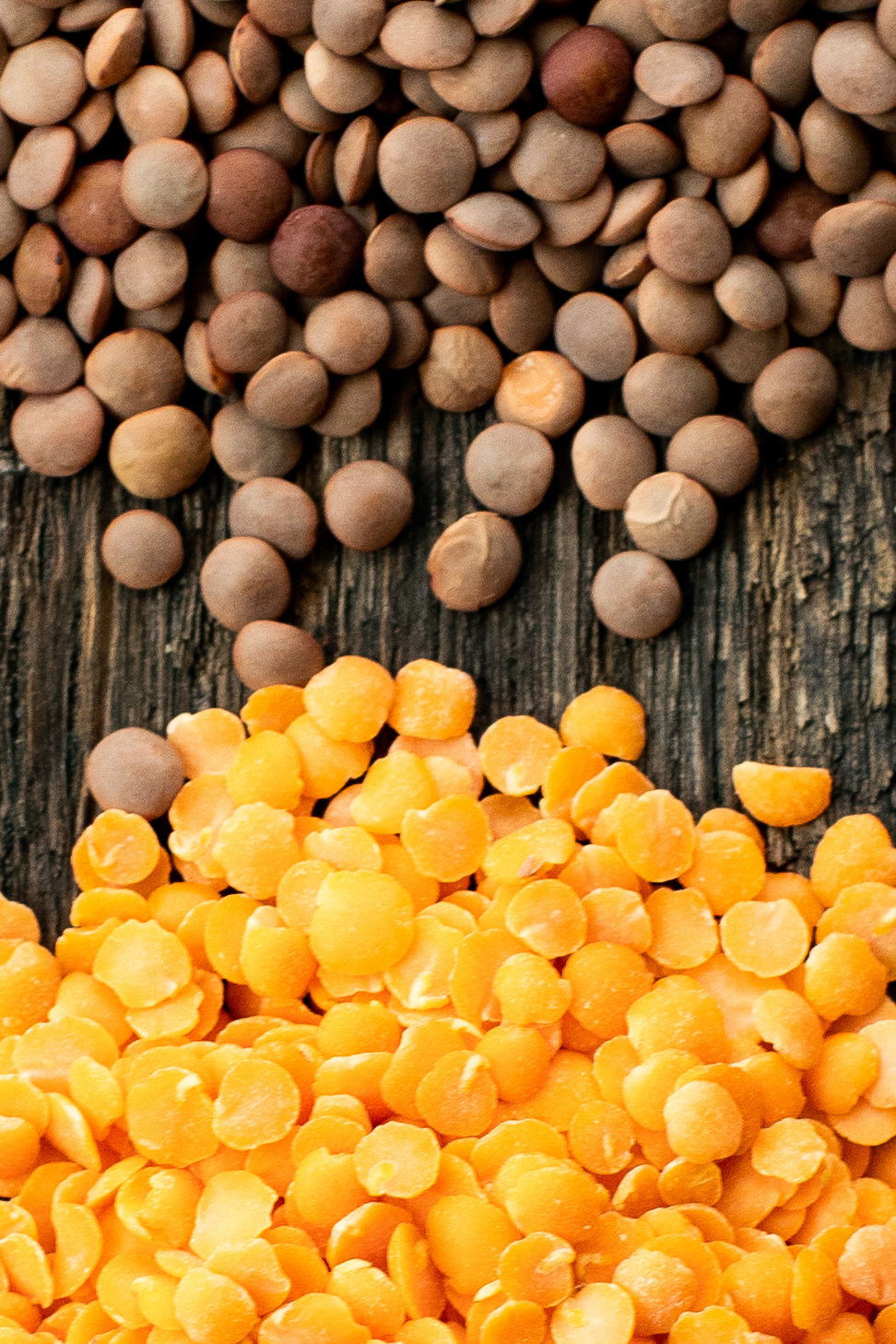
Lentils are all from the same species of plant, but there are many culinary varieties found throughout the world. The most common lentils in Indian cuisine are: toor (tuvar / pigeon pea) and masoor (red lentils). Often people will mistakenly refer to split peas or beans as lentils, but they are not.
What is a Bean?
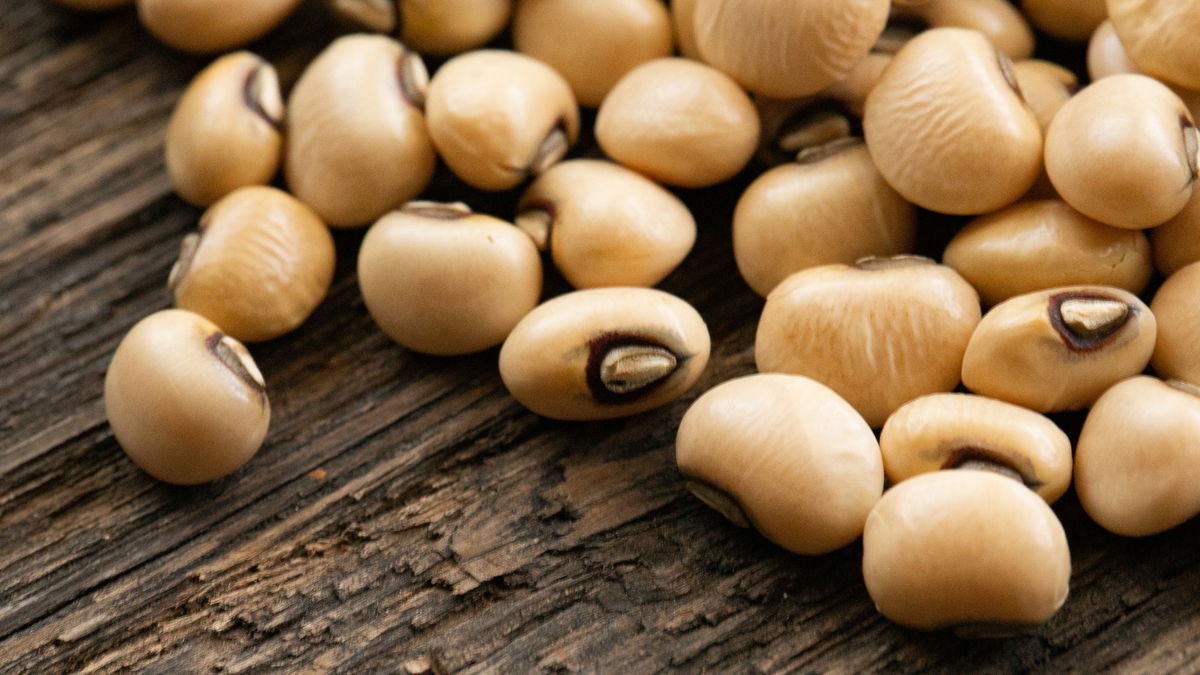
The word “bean” can mean a lot of things depending on the context. Within the world of Indian cuisine, it is safe to say a bean is an edible legume that is typically kidney-shaped and is not a lentil.
Some of the worlds oldest beans are fava beans (broad bean), soybeans, and chickpeas. Chickpeas, or chana, are especially important in Indian cuisine.
Some beans came to India from the New World, like lima beans (val), which is especially important in Gujarati cuisine. Other New World beans include runner beans and common bean.
The term “bean” has also come to be used outside the of the world of legumes for coffee beans, castor beans, vanilla beans, and so on.
Types of Dal, Lentils and Beans
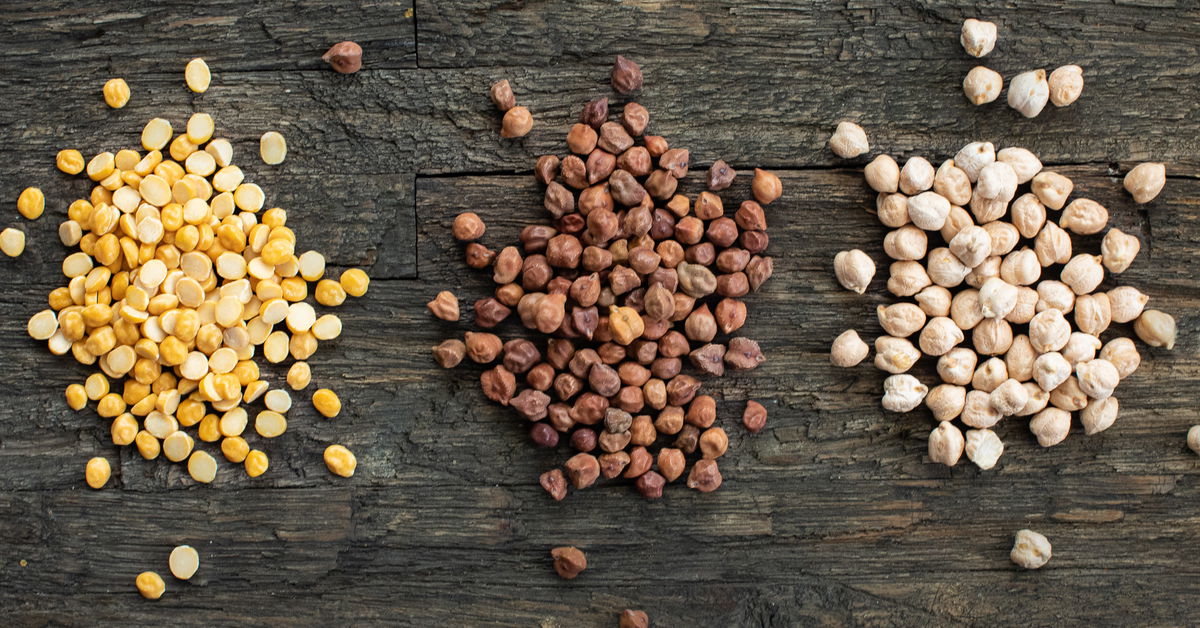
Chana (Chickpea)
Chana (Chickpea)
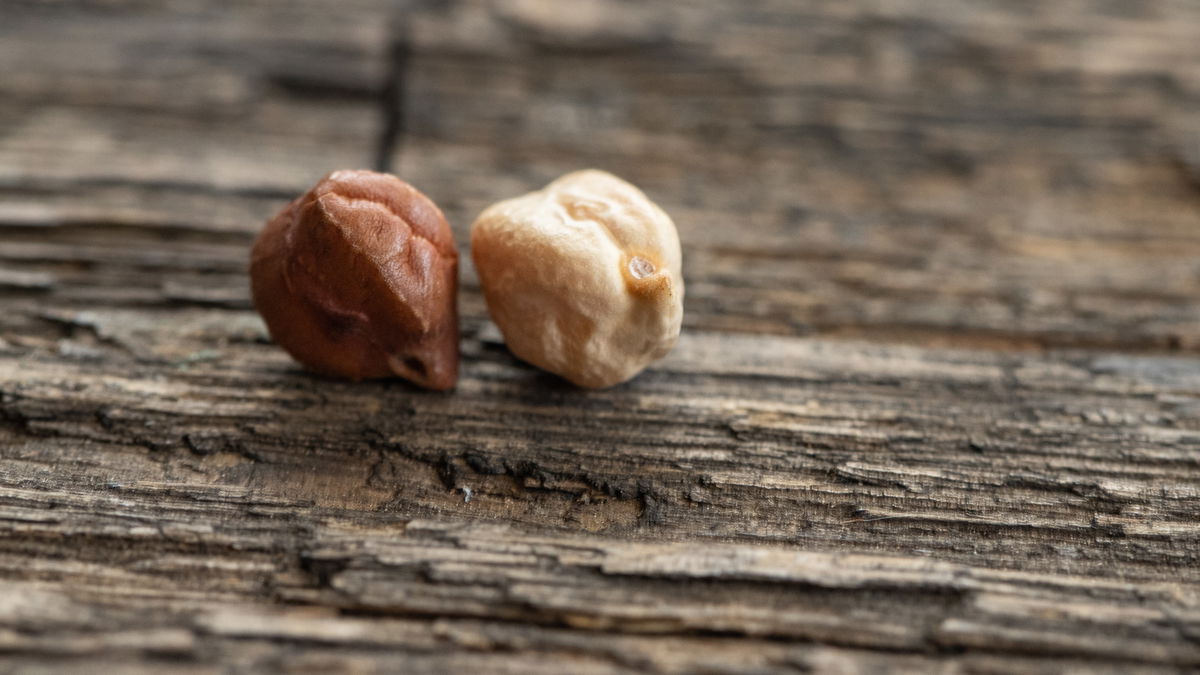
Names
Chana, channa, chickpeas, garbanzo bean, chole
Split Chana
- Soak: optional, 15 minutes
- Boil: 40 minutes
- Instant Pot: 15 minutes
- Pressure Cooker: 15 minutes / 7 whistles
Whole Chana
- Soak: 8 hrs / overnight
- Boil: 80 minutes
- Instant Pot: 20 minutes
- Pressure Cooker: 20 minutes / 8 whistles
Chana, or chickpeas, are found in three dried forms, the smaller dark skinned beans known as desi chana, the larger white skinned beans known as Kabuli chana and the smaller green skinned ones known as hara chana.
Fresh chickpeas are also available at many ethnic markets.
Chana are commonly eaten in India as whole beans, as split lentils, and a multitude of dishes are also made with chickpea flour (known as besan or gram flour).
Chana are slightly nutty in taste. The brown ones are earthier in flavor and tend have a drier texture. Chana Masala is the most popular Indian dish made with Kabuli chana.
Green chana is a bit sweeter than desi chana and Kabuli chana.
Chole, or chana masala, is made with Kabuli chana. Kala chana is a common kathor made with desi chana. Dudhi chana nu shaak is made with chana dal. And many foods are made with besan, like khandvi and pudla.
In addition to a multitude of savory dishes, chana or besan are also used for sweets such as ladoo, magaj, mothanthal and more. Chana dal is often used as the filling for puran poli, a sweet lentil stuffed paratha, although other pulses can be used instead.
Chana Recipes
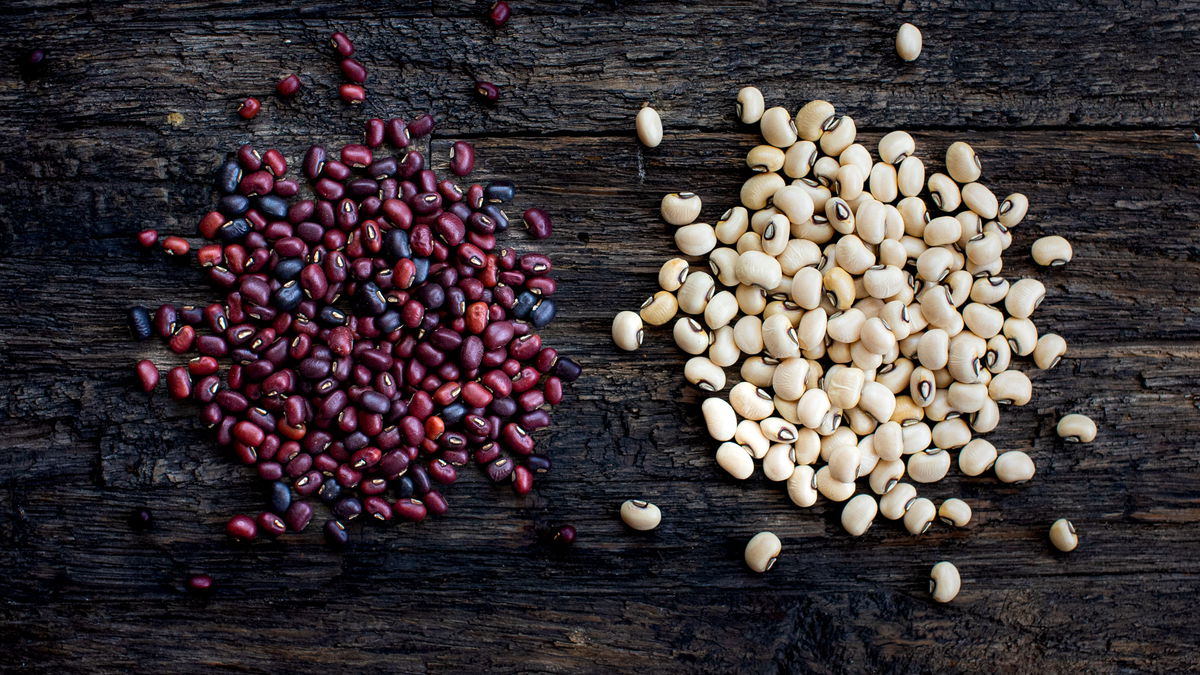
Chawli (Black Eyed Peas)
Chawli (Cowpea)

Names
Chawli, lobia, chora, cowpeas, black-eyed peas, adzuki bean, azuki bean, red bean
Split Chawli / Lobia
- Soak: optional, 15 minutes
- Boil: 40 minutes
- Instant Pot: 15 minutes
- Pressure Cooker: 15 minutes / 7 whistles
Whole Chawli / Lobia
- Soak: 8 hrs / overnight
- Boil: 65 minutes
- Instant Pot: 17 minutes
- Pressure Cooker: 17 minutes / 6 whistles
Several kinds of beans are called “chawli” or “cowpeas.” These include two that are very popular throughout the world, including India, Black-eyed peas and Azuki.
Black-eyed pea (also known as cowpea, Hindi: lobia, Gujarati: chora). Black-eyed peas have a distinctive flavor and are an all around pulse in Indian cuisine. They’re used to make curries, dals, papads and fritters.
Adzuki bean (also known as azuki or red cowpea, Hindi: chori, Gujarati: lal chora). Azuki beans have a sweet nutty flavor and are another all around pulse. They are used very much like black-eyed peas.
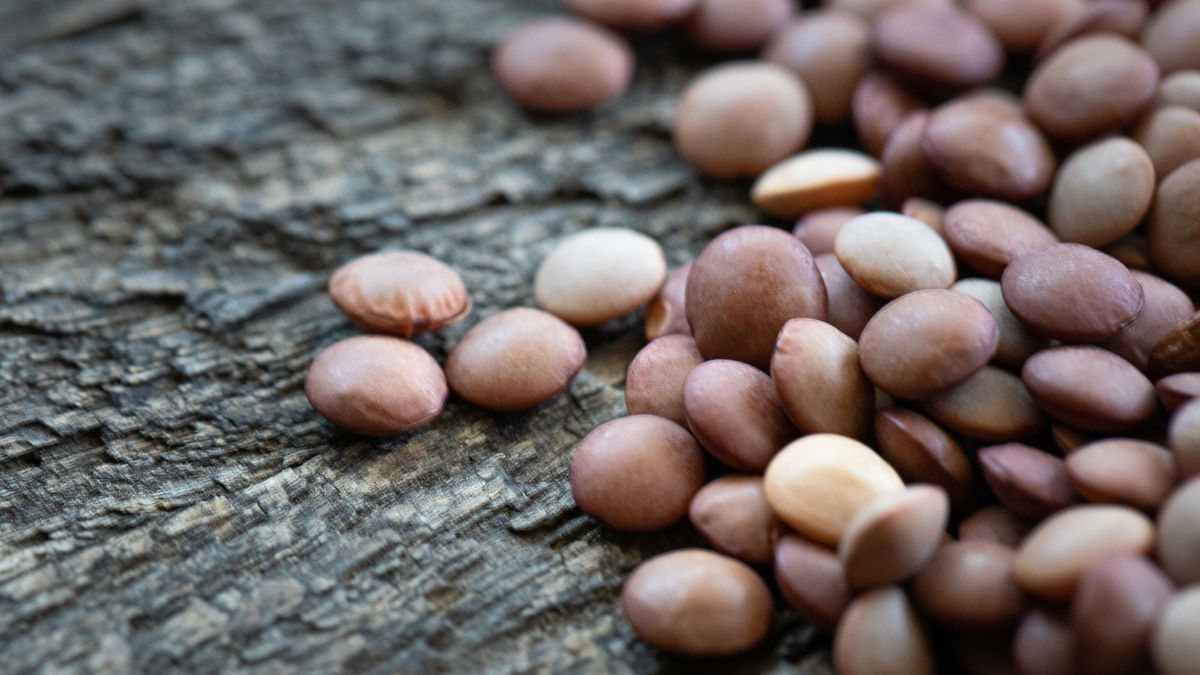
Masoor (Red Lentil)
Masoor (Red Lentil)
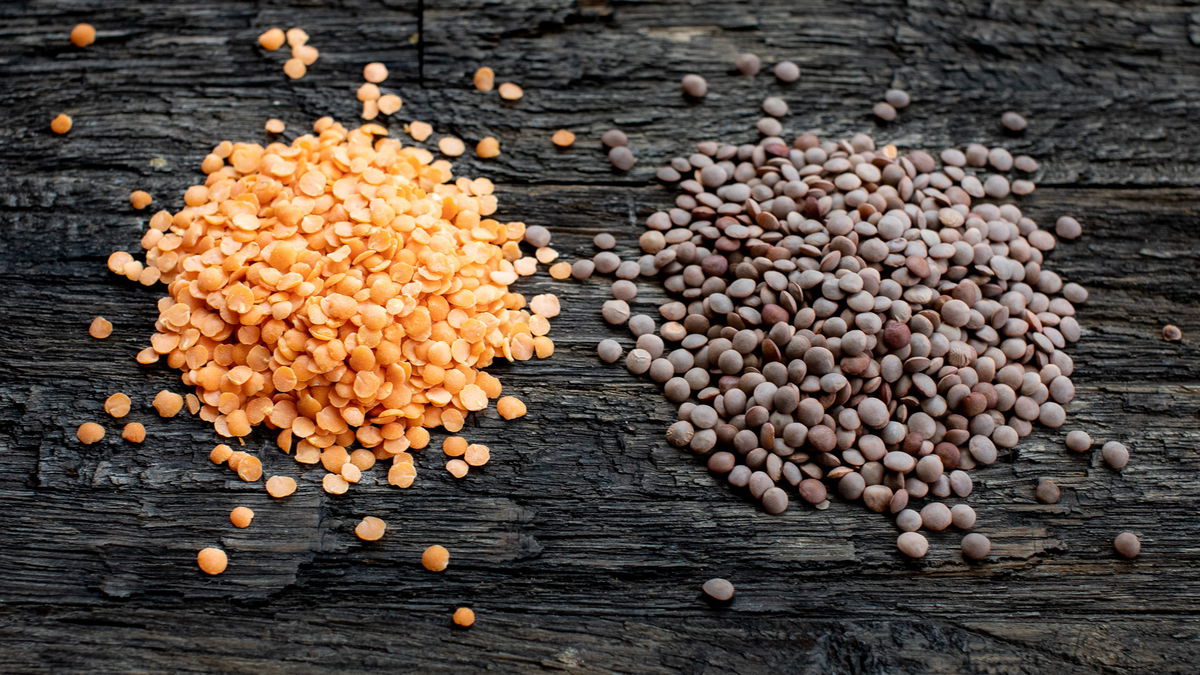
Names
Masoor, masoori, red lentils
Split Masoor
- Soak: Optional, 15 minutes
- Boil: 20 minutes
- Instant Pot: 8 minutes
- Pressure Cooker: 8 minutes / 2 whistles
Whole Masoor
- Soak: Optional, 15 minutes
- Boil: 45 minutes
- Instant Pot: 8 minutes
- Pressure Cooker: 8 minutes / 5 whistles
Masoor (also known as red lentil, Hindi: masoor, Gujarati: masoor) is a brown skinned lentil that is orange on the inside. Masoor dal has a pleasant earthy flavor and is very common in Northern India. It is commonly used to make dal, soups and stews.
Masoor dal cooks very, very fast. You don’t need an Instant Pot or pressure cooker. You can boil it on the stovetop and it will cook up very well, especially if using the split lentil. If you are in a hurry putting a meal together, this is the dal to make.
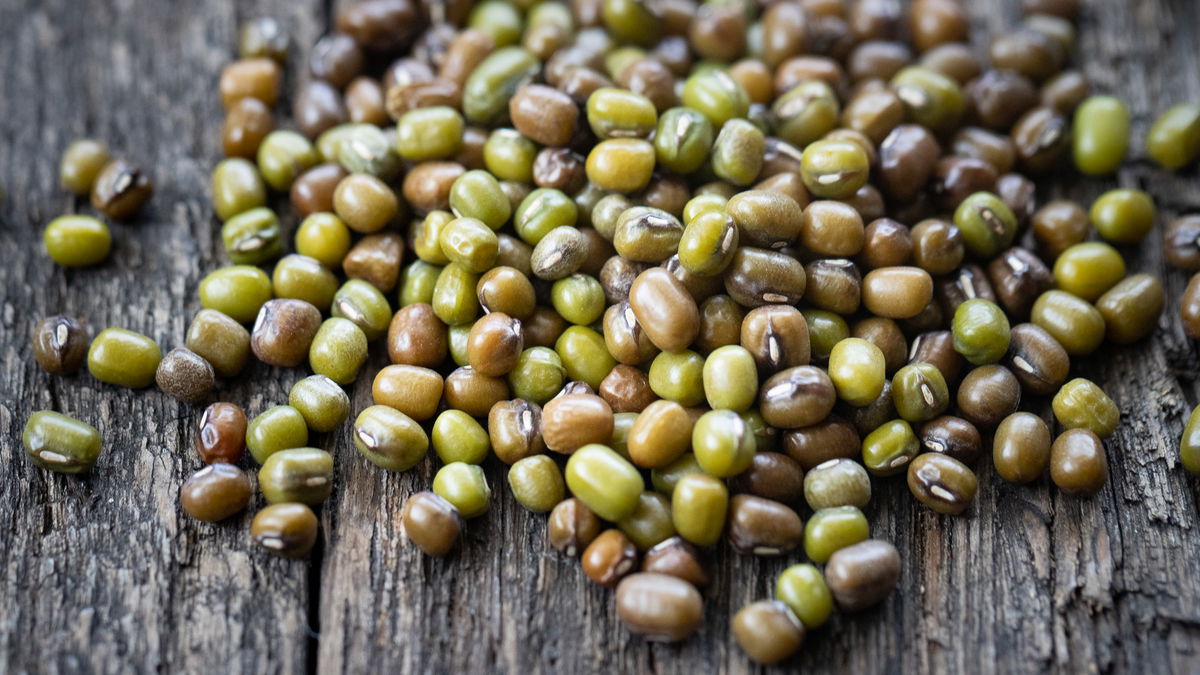
Mung (Moong Bean)
Mung (Moong Bean)
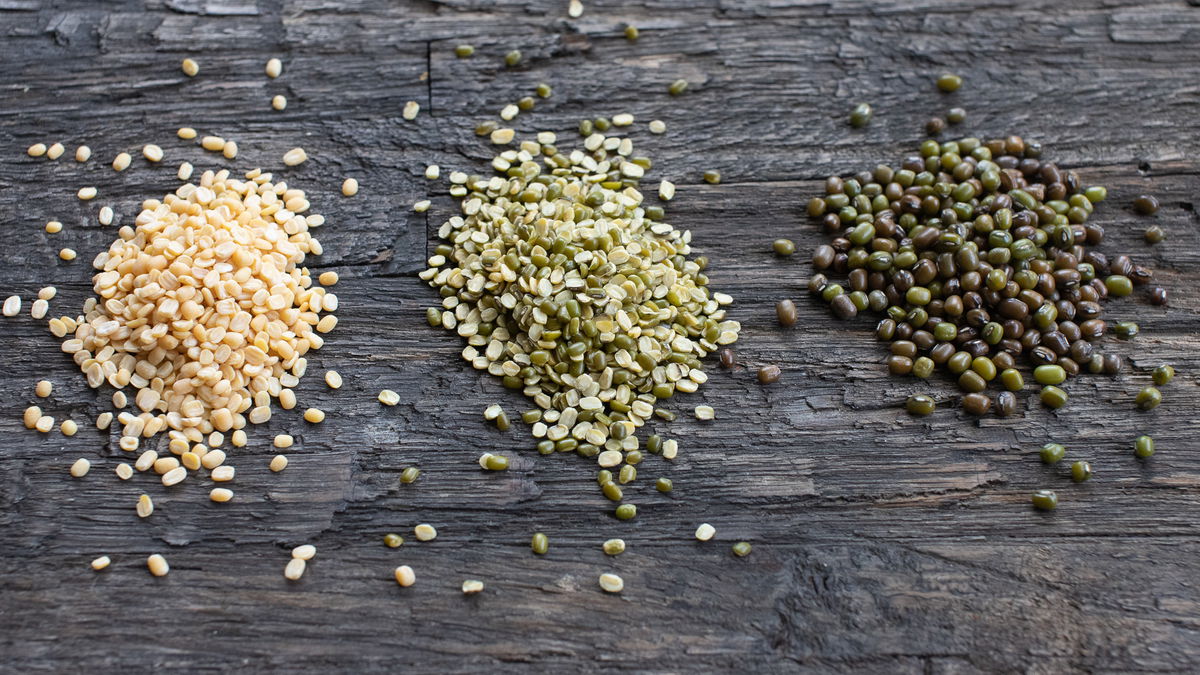
Names
Moong, mung, mug, green gram, maash
Split Mung
- Soak: Optional, 30 minutes
- Boil: 20 minutes
- Instant Pot: 7 minutes
- Pressure Cooker: 7 minutes / 3 whistles
Whole Mung
- Soak: Optional, 4 hours
- Boil: 65 minutes
- Instant Pot: 9 minutes
- Pressure Cooker: 9 minutes / 5 whistles
Mung beans (also known as green gram, Hindi: moong, Gujarati: mug), are little green seeds that are yellow inside. Mung beans have been found in archeological sites, such as Lothal, the oldest known Indus Valley civilization dating back to 2,600 BCE.
Mung beans are used for both sweet and savory dishes in Indian cooking.
They are eaten whole, sprouted, split with the skins on and split with the skins removed. In fact, mung dal (split with the skins removed) is one of the most commonly used lentils in my kitchen.
Mung beans with their skins on have a flavor reminiscent of green leafy vegetables but the mung dal with the skins removed has a mild sweet flavor and is often used for desserts as well as making khichdi and mung dal.
Sprouted moong, often just called “bean sprouts,” are a common ingredient in Indian and Asian cuisines. While they both use moong, Indians do not sprout them for as long.
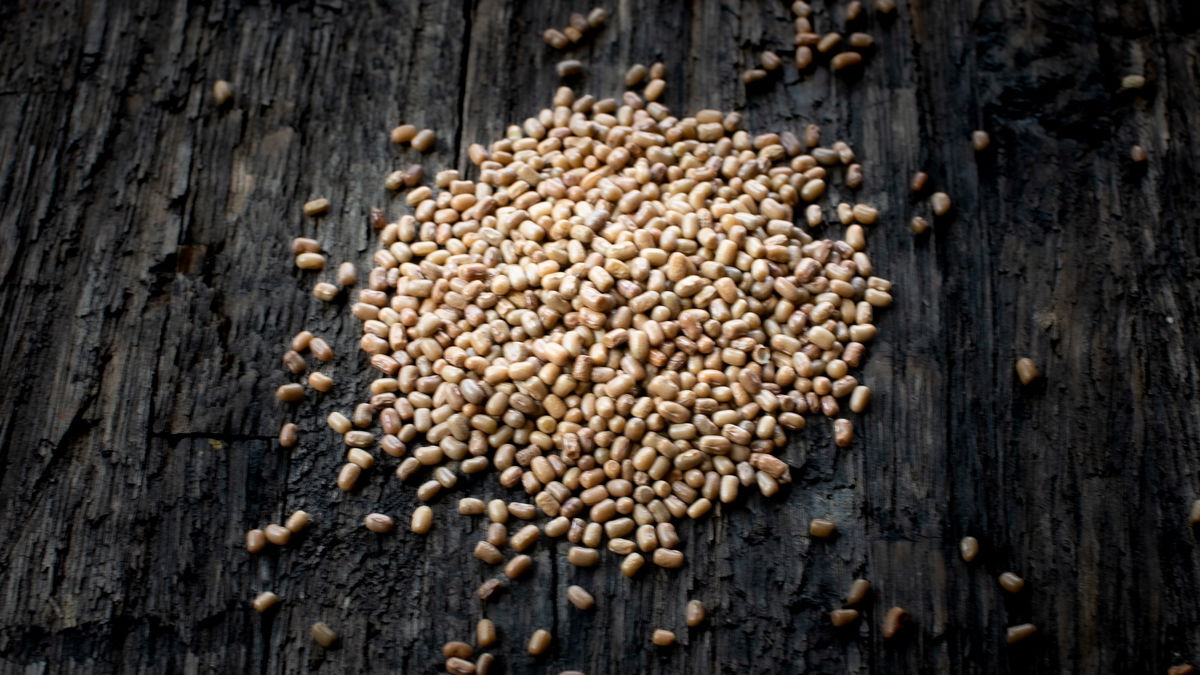
Math (Moth) Bean
Math (Moth) Beans

Names
Moth, math, mat bean, moth bean, matki, dew bean
Split Moth
- Soak: Optional, 15 minutes
- Boil: 45 minutes
- Instant Pot: 8 minutes
- Pressure Cooker: 8 minutes / 5 whistles
Whole Moth
- Soak: 8 hours or overnight
- Boil: 90 minutes
- Instant Pot: 12 minutes
- Pressure Cooker: 12 minutes / 6 whistles
Moth beans, known as math in Gujarati, are also known as mat bean, moth bean, matki or dew bean. Moth beans are common throughout India. They are valued as a crop because they are fast growing and very drought tolerant.
My favorite thing to do with them is to sprout them, similar to mung beans. I prefer moth beans for this because they are more earthy but without the grassiness of mung bean sprouts.
Some of my favorite foods with moth beans are math dal, a Gujarati dish, math nu shaak, spinach and lal math, and the street food, misal pav.
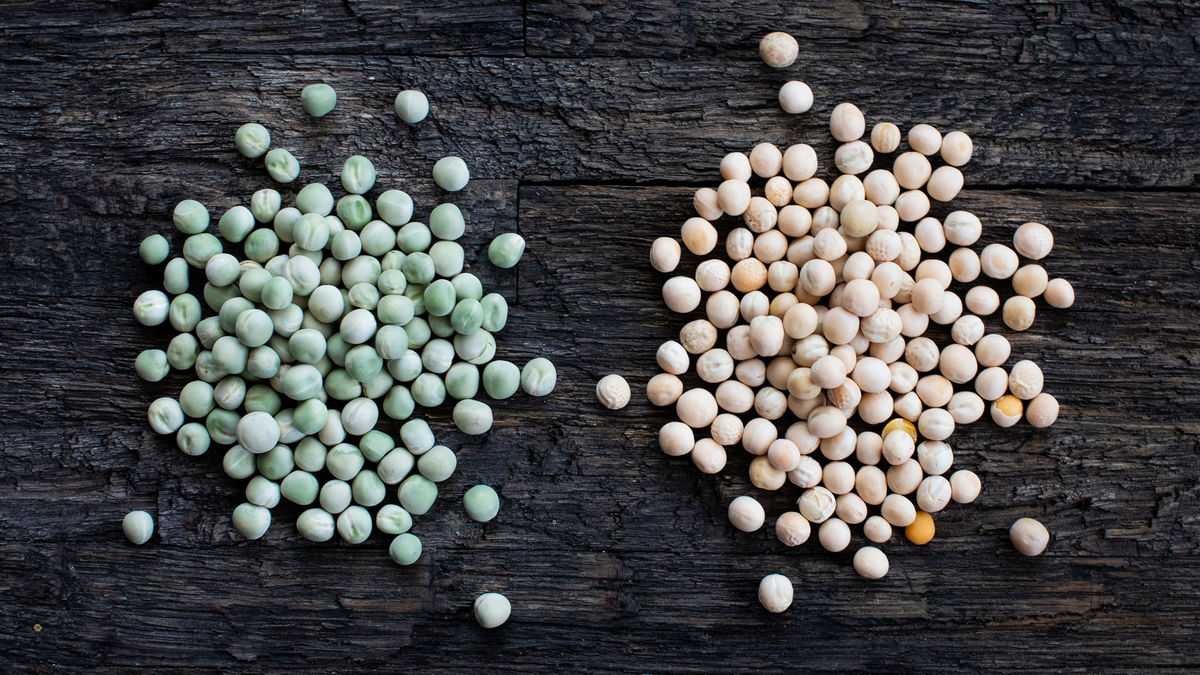
Matar (Peas)
Matar
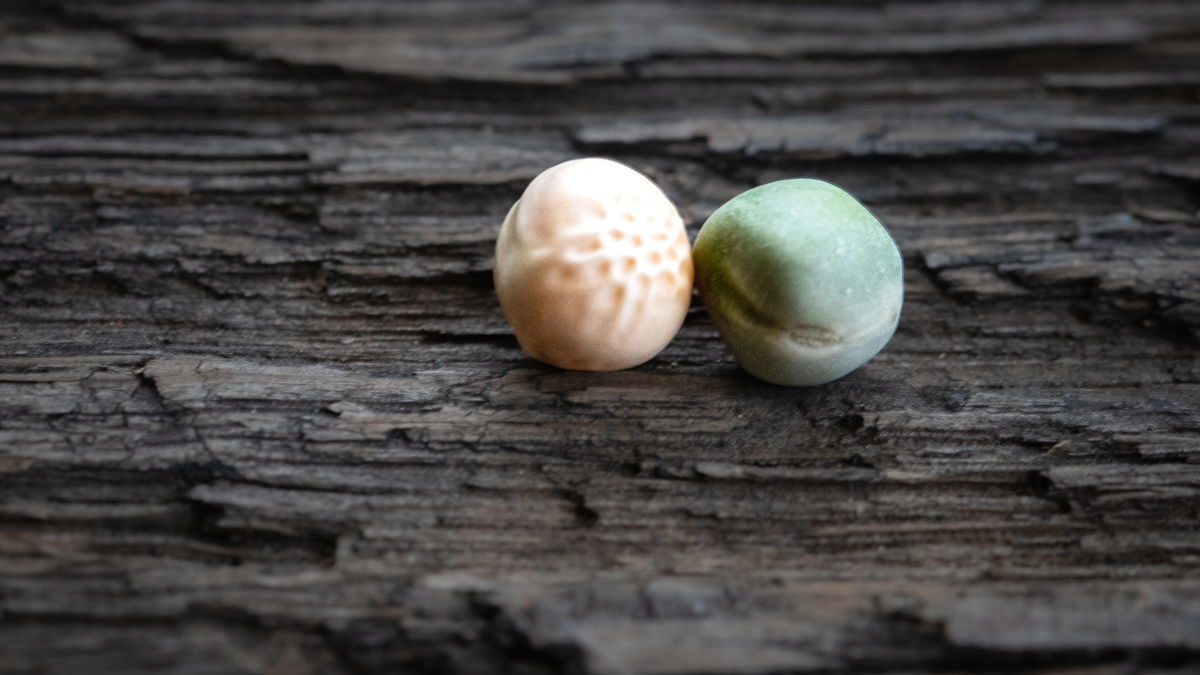
Names
Matar, vatana, pea
Split Matar
- Soak: Optional, 30 minutes
- Boil: 35 minutes
- Instant Pot: 8 minutes
- Pressure Cooker: 8 minutes / 5 whistles
Whole Matar
- Soak: 8 hours or overnight
- Boil: 80 minutes
- Instant Pot: 20 minutes
- Pressure Cooker: 20 minutes / 8 whistles
Peas are another kind of legume, they are all from the plant species Pisum sativum and include green peas, yellow peas, snap peas, snow peas, English peas and more.
They are round and wrinkly and grow in pods. Some beans also use the pea name, like chickpeas and black-eyed peas, but are not true peas.
In Indian food, we often treat them as either beans or lentils, depending on the dish. Fresh peas are added to many dishes for added nutrition and color, such as pulao and upma.
Matar paneer is a common restaurant dish made much like paneer makhani, but with peas added to the sauce. Methi malai matar is another popular dish made with cream, peas and fenugreek.
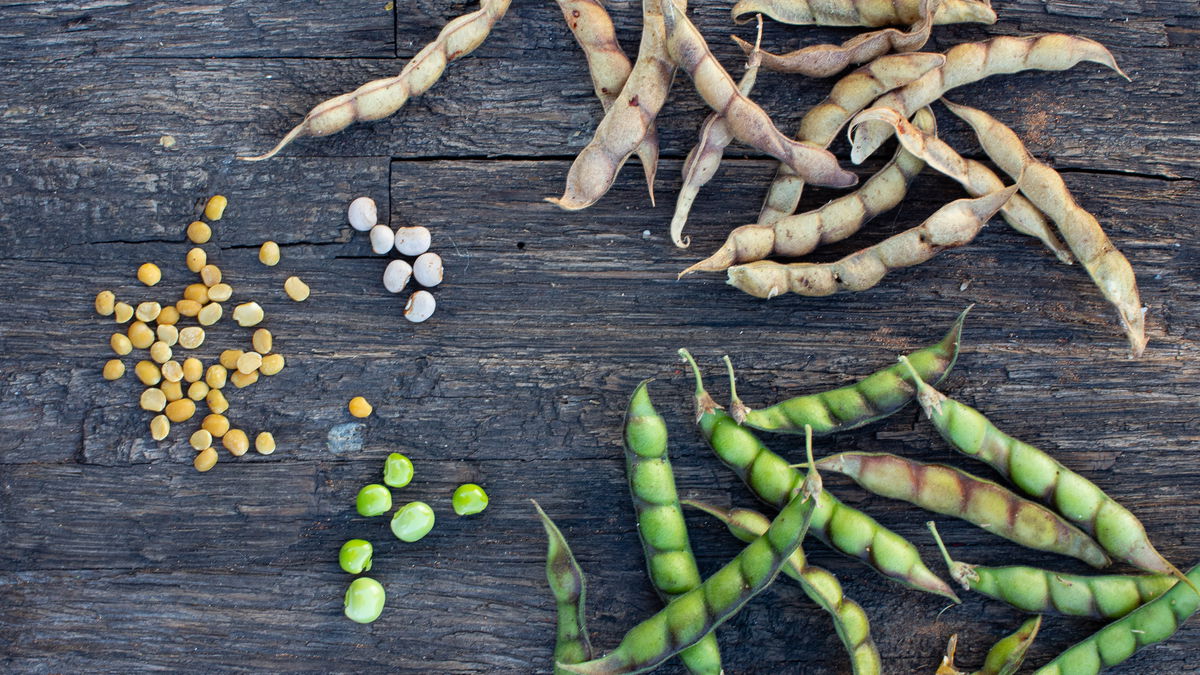
Toor (Tuvar or Pigeon Pea)
Toor
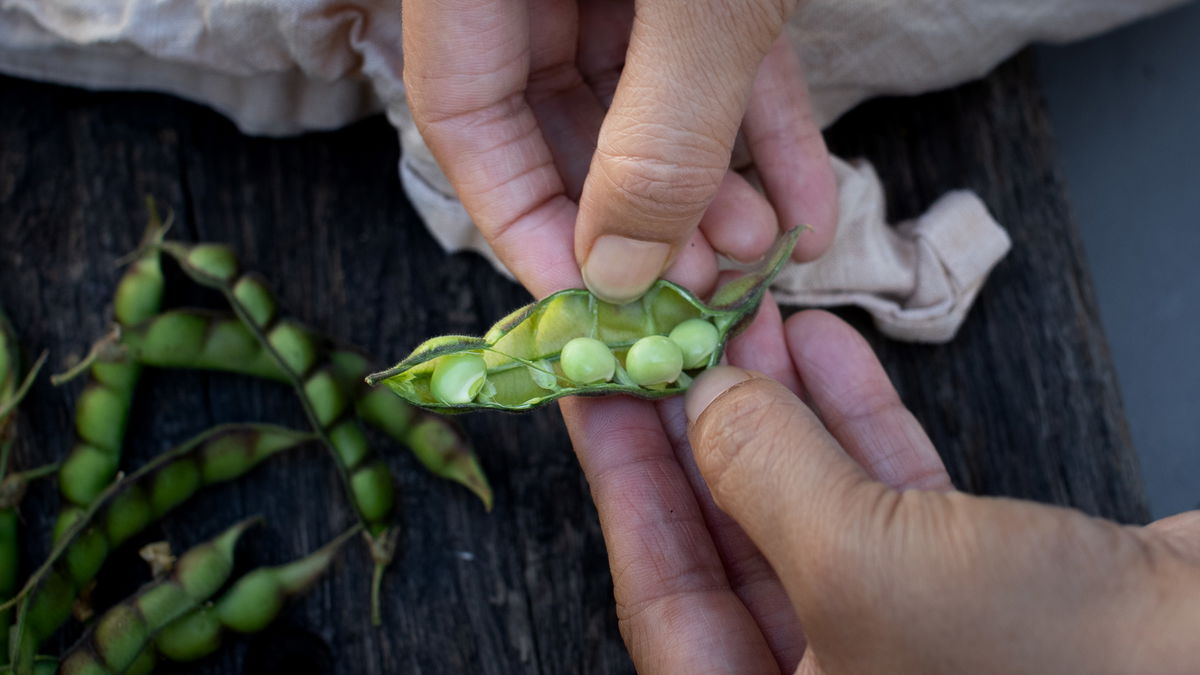
Names
Toor, tuvar, tuver, pigeon pea
Split Toor
- Soak: Optional, 30 minutes
- Boil: 35 minutes
- Instant Pot: 8 minutes
- Pressure Cooker: 8 minutes / 5 whistles
Whole Pea
- Soak: 8 hours or overnight
- Boil: 80 minutes
- Instant Pot: 18 minutes
- Pressure Cooker: 18 minutes / 8 whistles
Pigeon Pea (also known as tropical green pea, Hindi: toor, Gujarati: tuvar or tuver), is a beige lentil with a yellow interior.
Tuvar is the most important pulse in a Gujarati household. The fresh peas are highly prized and used for curries and stuffing in spicy handpies.
Toor has a delicious nutty flavor that is very distinctive. The dried and split peas are a staple in everyday cooking as well. They have a courser texture and compared to other dals like mung, they are not creamy.
The famous “Gujarati Dal” is made with this pea where the balance between spicy, sweet and sour is most important. It is also used in curries and spicy handpies (kachori, savory ghooghras).
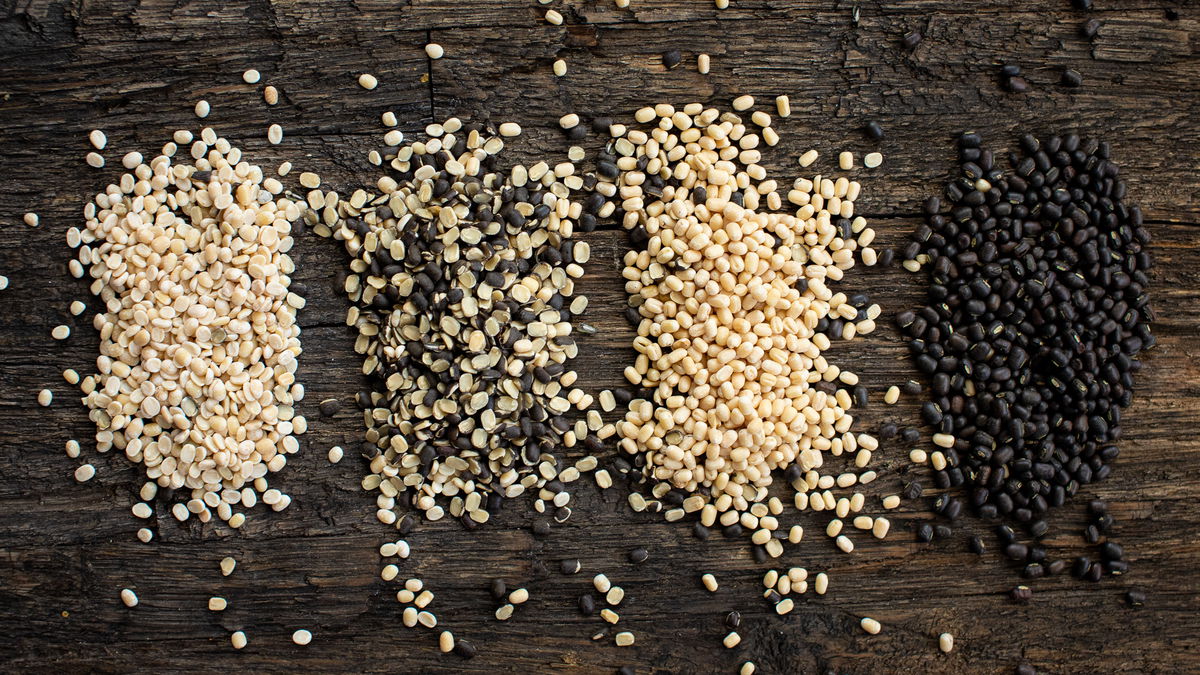
Urad (Black Lentil)
Urad
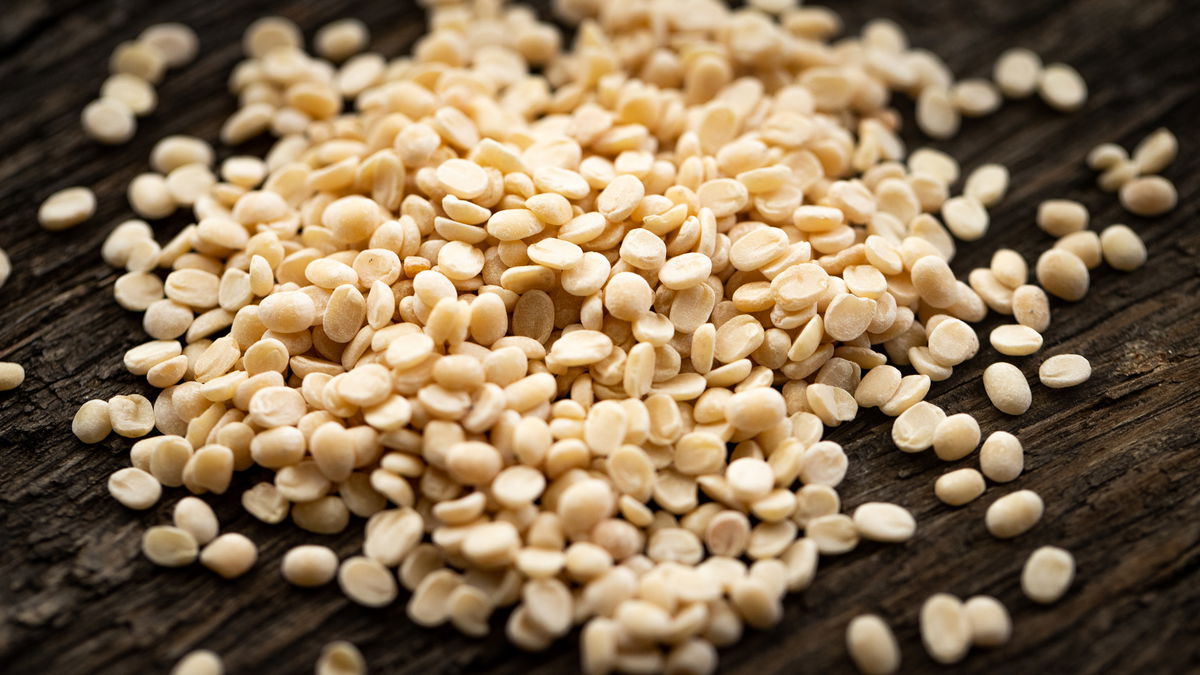
Names
Black gram, black lentil, urad (Hindi), adad (Gujarati)
Split Urad
- Soak: Optional, 30 minutes
- Stovetop: 30 minutes
- Instant Pot: 8 minutes
- Pressure Cooker: 8 minutes / 4 whistles
Whole Urad
- Soak: 4 hours or overnight
- Stovetop: 65 minutes
- Instant Pot: 11 minutes
- Pressure Cooker: 11 minutes / 6 whistles
Urad (also known as black gram, black lentil, Hindi: urad, Gujarati: adad), is a little black seed with a white interior.
Urad is very similar to a mung bean in size and shape but tastes entirely different. It has also been eaten in India for thousands of years and is highly prized.
Urad has an earthy flavor and an unusual mucilaginous texture (it’s a good thing!) when cooked. The popular dal makhani, a dark, buttery lentil dish, is made with urad.
Poppadam, or papad, is typically made with urad. Urad dal is also often mixed with rice for fermented batter recipes such as dosa and idli.
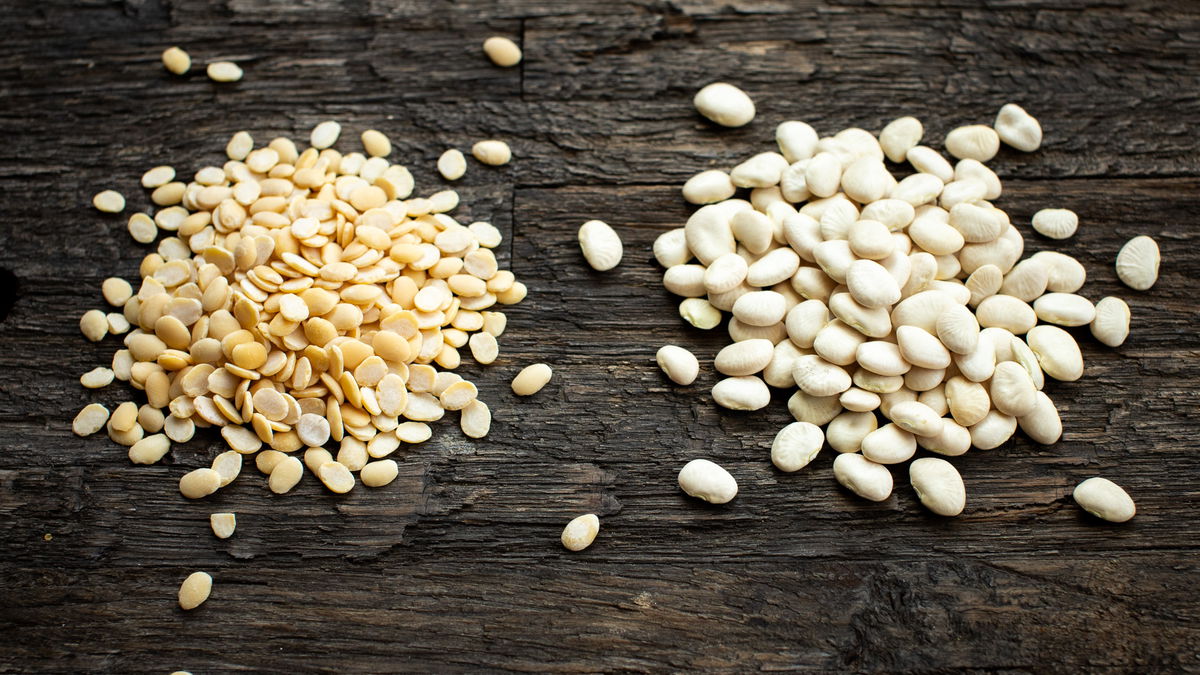
Val (Lima Bean)
Val

Names
Val, double bean, lima bean, butter bean, Madagascar bean, wax bean
Split Val
- Soak: Optional, 30 minutes
- Stovetop: 20 minutes
- Instant Pot: 8 minutes
- Pressure Cooker: 8 minutes / 4 whistles
Whole Val
- Soak: 8 hours or overnight
- Stovetop: 60 minutes
- Instant Pot: 14 minutes
- Pressure Cooker: 14 minutes / 8 whistles
Val are a New World bean, yet are one of the most beloved beans in Gujarat, often served at weddings and other special occasions.
Gujaratis cook them with lots of garlic and ajmo (carom seeds). They have a strong flavor.
They originated in Peru and were domesticated about 4,000 years ago. They made it to India by way of the Portuguese. Val is popular throughout the world, especially in Mexico, the American South, Spain, and India.
Like kidney beans, lima beans are toxic unless boiled for at least 10 minutes. A pressure cooker will work as well, but a slow cooker will amplify this toxicity if not boiled out first.
How to Cook Indian Lentils and Beans
| Bean | Stove Top Cook Time | Pressure Cooker or Instant Pot Time | Pressure Cooker Whistles | Slow Cooker Time | Soak Time |
|---|---|---|---|---|---|
| Mung, whole | 65 minutes | 9 minutes | 5 | low: 5 hours | 4 hours (optional) |
| Mung, split with skin | 20 minutes | 7 minutes | 3 | low: 4 hours | 30 minutes (optional) |
| Mung, split | 20 minutes | 7 minutes | 3 | low: 4 hours | 30 minutes (optional) |
| Urad, whole | 65 minutes | 11 minutes | 6 | low: 6 hours | 4 hours (optional) |
| Urad, split with skin | 30 minutes | 8 minutes | 4 | low: 4 hours | 30 minutes (optional) |
| Urad, split | 30 minutes | 8 minutes | 4 | low: 4 hours | 30 minutes (optional) |
| Garbanzo, brown | 80 minutes | 20 minutes | 8 | low: 8 hours | 8 hours to overnight |
| Garbanzo, white | 80 minutes | 20 minutes | 8 | low: 8 hours | 8 hours to overnight |
| Garbanzo, split (chana dal) | 40 minutes | 15 minutes | 7 | low: 7 hours | optional |
| Masoor, whole | 45 minutes | 8 minutes | 5 | low: 7 hours | optional |
| Pigeon Pea, whole | 80 minutes | 18 minutes | 8 | low: 8 hours | 8 hours to overnight |
| Pigeon Pea, split (tuver dal) | 35 minutes | 8 minutes | 5 | low: 5 hours | 30 minutes (optional) |
| Black-eyed Pea, whole | 65 minutes | 18 minutes | 6 | low: 7 hours | optional |
| Black-eyed Pea, split | 35 minutes | 9 minutes | 4 | low: 4 hours | optional |
| Adzuki, whole | 65 minutes | 17 minutes | 6 | low: 7 hours | optional |
| Pea, whole | 65 minutes | 16 minutes | 6 | low: 7 hours | 8 hours to overnight |
| Kidney Beans, whole | Boil for 30 minutes then simmer for 30 to 60 more minutes. | 14 minutes | 6 | Toxic. Do not cook in slow cooker. | 8 hours to overnight |
Cooking Notes:
Before you cook pulses, always sift through them to take out any pebbles or debris. Then rinse them a few times.
Pulses taste best when they are cooked slowly. When cooking pulses on the stove top, bring to a boil and lower heat to medium low and let simmer.
Start counting the cooking time once the pot has come to a boil and not before. In the case of kidney beans, boil for 30 minutes before lowering heat to simmer.
If your pulses are old, they can take double the time to cook. If they haven’t softened in the time indicated, don’t worry. Just cook until soft. Make sure to add more water as needed.
When cooking pulses, hold off adding salt or acids (such as lemon or vinegar) until the end, or the they will not soften.
How Much Water to Use
If you are cooking on the stovetop or slow cooker, use about 3 to 4 times the amount of water as you have pulses. In the Instant Pot or pressure cooker, two times the water will do. Always keep an eye on the stove and add more water if it starts to look dry.
Indian pressure cookers are a little different from the ones available in the West. They usually release steam regularly in what is referred to as “whistles.”
These whistles are counted to determine cook time. They are not always accurate and can vary from cooker to cooker. Use these whistle counts as a guide and figure out what works best for your cooker.
Soaking Lentils
In the cases where soaking is optional, if you soak the pulses, it will reduce the cooking time. The cooking time I’ve mentioned is for unsoaked pulses where soaking is optional and for soaked pulses where soaking is recommended before cooking.
Slow cookers can be a great, convenient way to prepare pulses, just throw everything in in the morning and when you get home from work your food is ready.
Some beans, e.g. kidney beans, are toxic until they are boiled (for at least 30 minutes), and slow cookers can make them more toxic! If you want to use the slow cooker on these beans, boil them for 30 minutes before adding them to the mixture, or use canned beans.
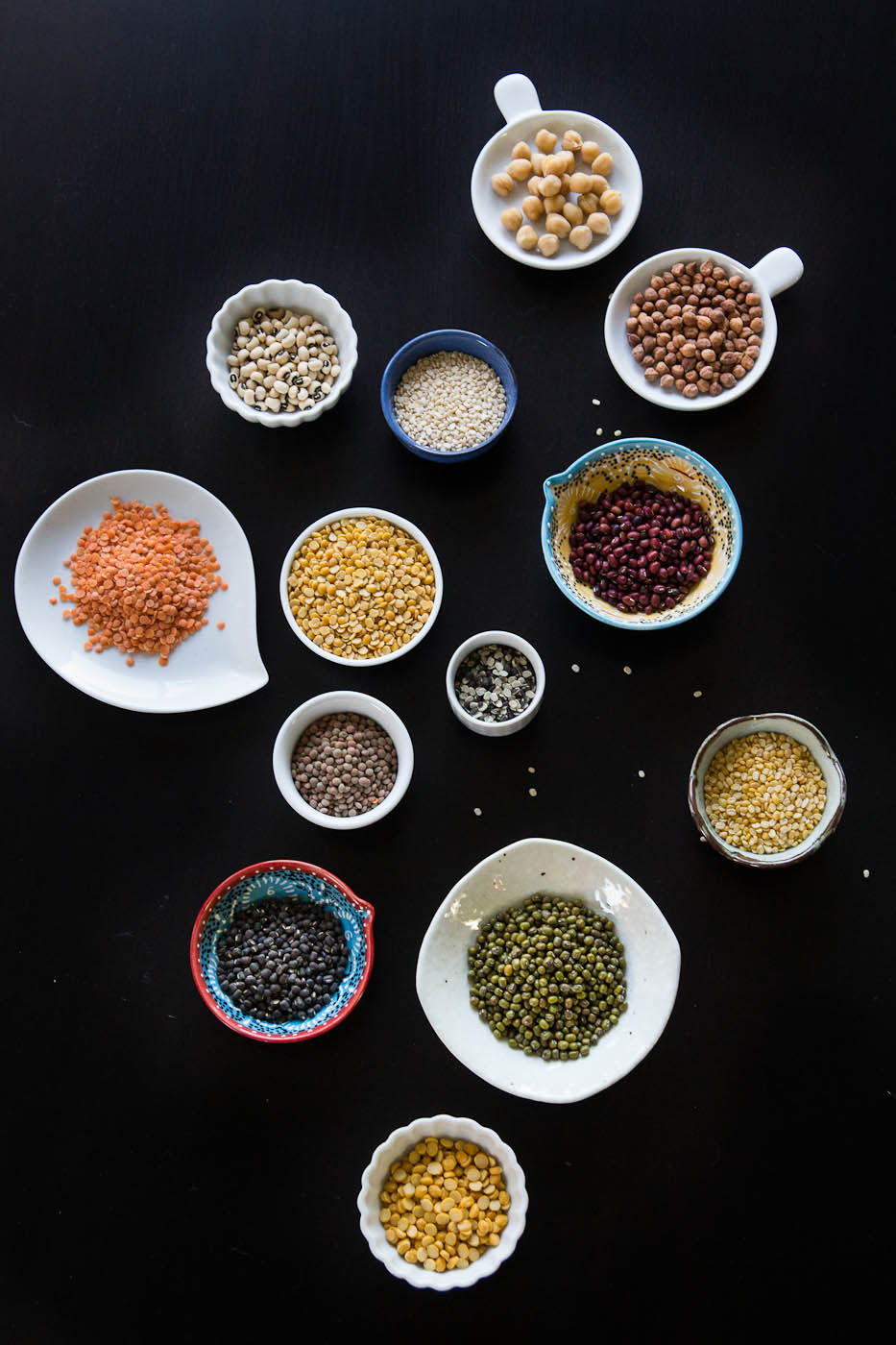
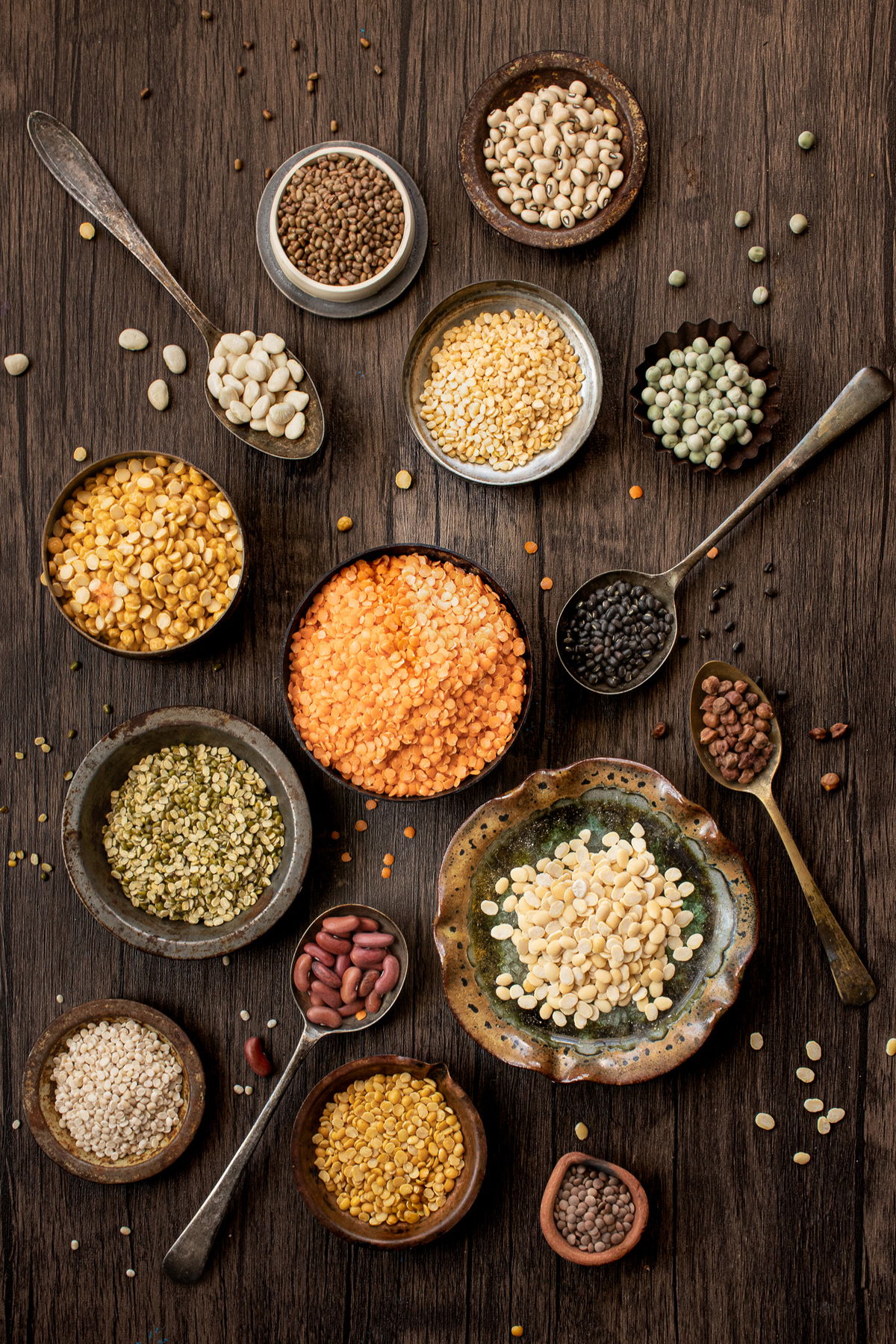
(Originally published January 23, 2014; republished with major updates September 7, 2022)
